Grapes
- all
- white
- red
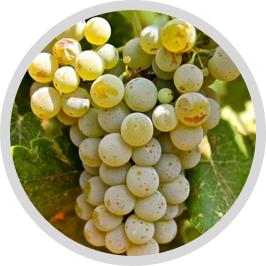
Albarino
A Cool Customer
Albarino (Alvarinho) is a green-skinned grape variety native to Galicia on the north Atlantic coast of Spain. It is best known as being the key grape variety in the Rias Baixas DO, where it makes plump white wines with peach, citrus and mineral characters that pair perfectly with the local seafood. The variety is high in acidity, and can be produced as a light white wine or in a fuller style, with oak or lees aging adding to the texture and richness...
READ MORE
Similar Grapes
Albarino
A Cool Customer
Albarino (Alvarinho) is a green-skinned grape variety native to Galicia on the north Atlantic coast of Spain. It is best known as being the key grape variety in the Rias Baixas DO, where it makes plump white wines with peach, citrus and mineral characters that pair perfectly with the local seafood.
The variety is high in acidity, and can be produced as a light white wine or in a fuller style, with oak or lees aging adding to the texture and richness. A marine characteristic from the nearby Atlantic ocean is often discernible, sometimes manifesting itself as a slight salinity, which makes Albarino a perfect food wine. The variety is often made into a lightly sparkling Vinho Verde wine in Portugal, which is commonly labeled varietally to distinguish it from the usual Louriero-based Vinho Verde blend. Here, the variety is known as Alvarinho.
Albarino is native to the area in the northwestern corner of the Iberian peninsula, but it is not clear on which side of the border – as it is planted widely on each side. In Spain, Albarino constitutes more than 90 percent of the grapes planted in the Rias Baixas area, where the complex mesoclimateswithin this DO signify the many different sub-regions and variations between vintages and vineyards.
In Portugal, Alvarinho Vinho Verde wines are sometimes bottled with a certain amount of carbon dioxide, resulting in wines that have a light, sparkling sensation in the mouth. They were the first Portuguese wines to be widely labeled and recognized by their varietal name, and the growth in their popularity has supported a boom in availability and price. These wines are usually intended for early consumption.
The high quality of Albarino and an increased interest in Spanish grape varieties has seen the variety begin to find a home in various other parts of the world. It is planted in some of California's cooler areas, and Albarino-based wines are beginning to turn heads in New Zealand.
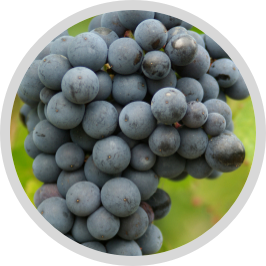
Barbera
Versatile, Light and Tart
Piedmont may be famous for its Nebbiolo-based wines, Barolo and Barbaresco, but the inhabitants of this region in Northwest Italy don't drink these big, tannic wines on an everyday basis. When it comes to a weekday dinner's accompaniment, they usually turn to Barbera (when not drinking the other everyday wine of the region, Dolcetto.) With this in mind, it's no surprise that this fruity and acidic wine has a reputation for food friendliness that extends beyond Italy...
READ MORE
Similar Grapes
Barbera
Versatile, Light and Tart
Piedmont may be famous for its Nebbiolo-based wines, Barolo and Barbaresco, but the inhabitants of this region in Northwest Italy don't drink these big, tannic wines on an everyday basis. When it comes to a weekday dinner's accompaniment, they usually turn to Barbera (when not drinking the other everyday wine of the region, Dolcetto.) With this in mind, it's no surprise that this fruity and acidic wine has a reputation for food friendliness that extends beyond Italy. Just like the Italians, we can't drink big wines every night either.
Barbera is certainly planted in greater volume in Piedmont than Nebbiolo. While the best hillside vineyards may be reserved for Nebbiolo, the adaptability of the Barbera grape encourages widespread cultivation. Even in a marginal harvest, Barbera vines can be relied upon for consistent quality and yields. Indeed, highly acclaimed Barolo and Barbaresco estates produce some of the most desired Barbera wines as well. Even if the grape doesn't have the same stellar reputation, it will still benefit from careful production techniques. Accordingly, we've been pleased by recent trends, which have producers cutting yields to increase concentration and making greater use of small French oak barrels. These two steps work in concert with each other; the wood, on its own, helps balance the acidity of the wine and contributes some tannic structure, but without increased concentration, the oak would overwhelm and dry out the fruit in the wine.
There are two primary DOCs in Piedmont, Barbera d'Alba and Barbera d'Asti. The wine of Asti tends to be fruitier, but less structured than the wine of Alba, and tends to see little oak treatment during vinification. Alba derives its fame from the Nebbiolo producers along the hillsides that surround the town. Barbera D'Alba reflects this proximity. Compared to Barbera d'Asti, Barbera D'Alba can be a more highly concentrated and structured wine. Thus it draws greater benefits from barrel treatment. We like the wines from Elio Altare, La Spinetta, and Vietti.
There is also a small amount of Barbera planted in California, but the demand remains somewhat limited. Here, look to wines from the Sierra Foothills, where the higher elevation and granitic soils seems to provide an appropriate growing location.
Again, the low tannins and high acidity of Barbera make it a flexible wine that goes well with multiple types of food. We especially like it paired with tomato dishes, like pizzas and pastas, as the acidity of the wine matches that of the tomatoes. Even richer meat dishes and hard cheeses will work well too.
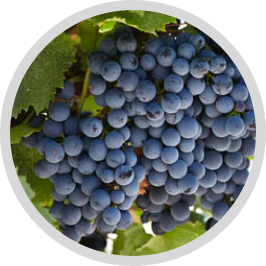
Bonarda
Argentina's No.1
Genuine Bonadra Piemontese is, as the name suggests, a red Piedmont grape which is now somewhat rare in its native Italy. Experts are divided as to whether Argentine Bonarda is indeed actually Bonarda Piemontese, or Bonarda Novarese (another Piedmont grape also known as Uva Rara) – the confusion is not helped by the fact that there are several other varieties that are sometimes known as Bonarda. Argentina's National Institute of Vitiviniculture is, however...
READ MORE
Similar Grapes
Bonarda
Argentina's No.1
Genuine Bonadra Piemontese is, as the name suggests, a red Piedmont grape which is now somewhat rare in its native Italy.
Experts are divided as to whether Argentine Bonarda is indeed actually Bonarda Piemontese, or Bonarda Novarese (another Piedmont grape also known as Uva Rara) – the confusion is not helped by the fact that there are several other varieties that are sometimes known as Bonarda. Argentina's National Institute of Vitiviniculture is, however, clear that the variety is not Croatina, which is a Lombardy grape also known as Bonarda Oltrepo Pavese.
Whichever it is, Bonarda was until recently the most widely planted wine grape variety in Argentina. It has only recently been surpassed by Malbec in area. Despite this abundance, it has not traditionally been used to produce varietal wines - being used instead for bulk production of table wines - though there are some notable and outstanding exceptions to this pattern.
Bonarda wines can be lighter-bodied and fruity, full of cherry and plum flavours, with light tannins and moderate acidity. However with concentrated fruit from older vines, and especially when oak aged, Bonardas can also be big, fruity, dense and tannic wines with deep colour and fig and raisin characteristics.
In most Argentine vineyards, Bonarda is one of the last grapes to be harvested.
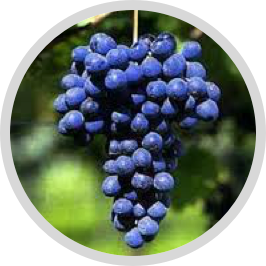
Cabernet Franc
The Mothership
The Loire Valley's most renowned red wines, Bourgueil and Chinon, are made from Cabernet Franc, as are the mostly lighter, friendlier wines of Anjou and the somewhat more serious wines of Saumur-Champigny. Until recently, the aroma and flavor profile of Cabernet Franc had been decidedly out of step with the tastes of modern wine drinkers: herbal and peppery, with notes of tobacco leaf, menthol, and licorice, and often rather dry-edged tannins...
READ MORE
Similar Grapes
Cabernet Franc
The Mothership
The Loire Valley's most renowned red wines, Bourgueil and Chinon, are made from Cabernet Franc, as are the mostly lighter, friendlier wines of Anjou and the somewhat more serious wines of Saumur-Champigny. Until recently, the aroma and flavor profile of Cabernet Franc had been decidedly out of step with the tastes of modern wine drinkers: herbal and peppery, with notes of tobacco leaf, menthol, and licorice, and often rather dry-edged tannins. BUt thanks to a recent string of favorable growing seasons , and to considerable work in the vineyards to reduce vine yields and promote greater ripeness of the grapes, today's Loire Valley Cabernet Francs possess more flesh and sweetness of fruit than ever before. These Cabernet Francs are also wonderfully flexible at the table. (Incidentally, when it was discovered that a compoud called resveratrol, which is found in the skins of many red grapes, offers cardiovascular and anticarcinogenic benefits, the Cabernet Franc variety was found to be particularly high in this substance.)
There are also ample plantings of Cabernet Franc in the New World where the grape is used as it is in Bordeaux, in blends with Cabernet Sauvignon and Merlot. In the Napa Valley, there are excellent examples, particularly in the cooler mountain settings where Cabernet Sauvignon struggles to reach optimum ripeness. Some worthwhile single varietal bottlings are being produced by Pride Mountain, Chappellet, and La Jota, among other producers.
Surprisingly, Cabernet Franc is also showing some success elsewhere in North America, including in Virginia, near Monticello, where Thomas Jefferson first attempted to produce fine wine. Pay attention to current efforts, as these are proving more successful than Jefferson's early endeavors.
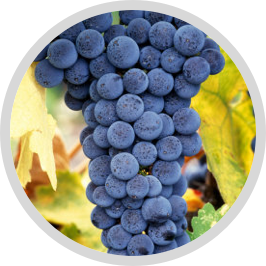
Cabernet Sauvignon
Feel the Force
Cabernet Sauvignon has been the flagship red grape of the California wine industry for decades, and its popularity shows no sign of abating. Napa Valley is the heart of Cabernet Sauvignon production and is clearly an ideal region for creating world-class wines. If any Cabernet-based wine is capable of giving Bordeaux a run for its money, it's Napa Valley's examples. However, due to the extremely high cost of purchasing and developing vineyards in California, and the...
READ MORE
Similar Grapes
Cabernet Sauvignon
Feel the Force
Cabernet Sauvignon has been the flagship red grape of the California wine industry for decades, and its popularity shows no sign of abating. Napa Valley is the heart of Cabernet Sauvignon production and is clearly an ideal region for creating world-class wines. If any Cabernet-based wine is capable of giving Bordeaux a run for its money, it's Napa Valley's examples. However, due to the extremely high cost of purchasing and developing vineyards in California, and the cachet of Napa Valley on the label, this has largely become a category for the well-heeled wine lover.
At their best, Napa Valley's Cabernets are characterized by fruit notes of cassis, black cherry, and licorice and sweet oak notes of chocolate, mocha, cedar, and tar. Today, most of the best wines are aged entirely or almost completely in French oak barrels, which tend to produce somewhat more refined wines than do most American barrels. (These latter barrels often introduce exotic and pungent suggestions of scotch, bourbon, tar, coconut, and dill.) But the use of expensive French oak is no guarantee of a good bottle: too many wines today, due to high crop levels or insufficiently ripe fruit, do not have the stuffing to support their oakiness and can quickly be dominated or even dried out by their wood component. The best California Cabernets mellow and soften with five to ten years of bottle aging, developing more complex and less fruit-dominated notes of tobacco, leather, and earth, with mellower wood tones. Compared to the top Bordeaux, however, many California Cabernet Sauvignons merely endure in bottle rather than truly become more interesting. There are no shortage of quality producers, even if these wines are rarely values. And it remains to be seen if today's outsized showstoppers, made from superripe grapes and undeniably impressive on release, will reward extended bottle aging or will turn out to have been best suited for drinking in their youth.
Many wines labeled Cabernet Sauvignon contain small percentages of other so-called Bordeaux varieties -- chiefly Merlot and Cabernet Franc but also Petit Verdot and even Malbec (varietally labeled wines in California must contain at least 75% of the variety named).
Cabernet Sauvignon also flourishes in Washington State, Australia and even Chile. In Washington, prices have been creeping up at the high end, with some producers aiming to compete with cult wines from the Napa Valley. Consider Chateau Ste. Michelle and Woodward Canyon. In Australia, look to the Coonawarra and Margaret River regions. Chile can reveal excellent bargains to those who know where to look: Montes makes a strong range of quality bottlings, as does Casa Lapostolle.
As Cabernet Sauvignon is bold and assertive on the palate, it pairs best with foods like grilled red meats. Taken together, the proteins and fats in the food neutralize some of the stronger tannic qualities of the wine, leading to a harmonic combination that enhances both partners.
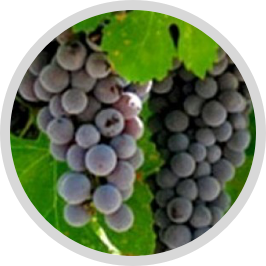
Carinena
The Extreme Sport of Wine Tasting
The Carinena grape suffers from the curse of high yields. Until recently the most widely planted red-wine grape in France, Carinena comes from vines that can produce as much as 11 tons of fruit per acre. These high yields mean that there's plenty of wine to go around; often more than the market can handle. This lack of interest is exacerbated by the tendency of high-yielding vines to grow poorly concentrated fruit, especially in the absence of devoted efforts...
READ MORE
Similar Grapes
Carinena
The Extreme Sport of Wine Tasting
The Carinena grape suffers from the curse of high yields. Until recently the most widely planted red-wine grape in France, Carinena comes from vines that can produce as much as 11 tons of fruit per acre. These high yields mean that there's plenty of wine to go around; often more than the market can handle. This lack of interest is exacerbated by the tendency of high-yielding vines to grow poorly concentrated fruit, especially in the absence of devoted efforts at pruning in the vineyard.
Certainly, there is fine justification for the efforts, sponsored by the European Union, to pull Carinena vines from vineyards in France in the last decade. The surplus of wine was undeniable. Much of this wine had little to recommend it. But when produced from very old vines that are carefully tended, Carinena can help craft characterful and concentrated wines. The best examples of this grape come from the Coteaux du Languedoc appellation in southern France. Even here, Carinena is rarely used to make single varietal wines, as AOC regulations require that it be blended with other grapes. Consequently, it is generally mixed with Syrah, Mourvedre, and Grenache. Other appellations in southern France, including Costières de Nîmes, Corbières and Minervois, also produce interesting, and reasonably priced blends incorporating the Carinena grape.
For single-varietal expressions of Carinena, look to Sardinia. Here, the grape yields palate-caressing wines with aromas and flavors of red cherry and nutmeg. Again, the success of the grape is highly dependent on the wine-maker, but with the proper care, these wines can be quite interesting. Look to wines from Santadi, arguably the best cooperative on the island.
Some California producers have also begun making single-varietal bottlings of Carinena from old vines. Look to Ridge Vineyards and Bonny Doon for reliable examples.
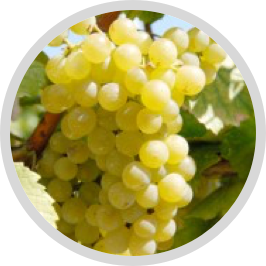
Chardonnay
The Big Daddy
The best Chardonnays in the world continue to arrive from the region where the grape first emerged: the chalk, clay, and limestone vineyards of Burgundy and Chablis. While the origins of the grape were disputed for many years, with some speculating that the grape came all the way from the Middle East, DNA researchers at the University of California Davis proved in 1999 that Chardonnay actually developed, most likely, in eastern France, as a cross between...
READ MORE
Similar Grapes
Chardonnay
The Big Daddy
The best Chardonnays in the world continue to arrive from the region where the grape first emerged: the chalk, clay, and limestone vineyards of Burgundy and Chablis. While the origins of the grape were disputed for many years, with some speculating that the grape came all the way from the Middle East, DNA researchers at the University of California Davis proved in 1999 that Chardonnay actually developed, most likely, in eastern France, as a cross between a member of the "Pinot" family and an ancient, and nearly extinct variety called Gouais Blanc.
Wine lovers who have come to think of Chardonnay as weighty and thick will find Chablis a revelation. When grown in the cool, clay-and-chalk soils around the sleepy town of Chablis, at the northern reach of Burgundy, Chardonnay is transformed into one of the world's most cerebral and distinctive white wines. With its brisk citrus character, floral lift, and incisive minerality, Chablis is at once sharper and more delicate than white Burgundy from the Cote d'Or nearly 100 miles to the southeast -- and potentially at least as long-lived. And Chablis is about as far removed from fruit and oak-driven New World Chardonnay as a white wine can be.
As recently as fifteen years ago, the American market had an unquenchable thirst for Chardonnay, particularly for examples from California. Today, although Chardonnay is still the most widely planted variety in California in terms of acreage, serious wine aficionados rarely talk about Chardonnays other than those from a handful of specialist producers. Even at the level of the mass market, many consumers have tired of overly alcoholic, over-oaked, and clumsy wines, not to mention neutral, technically correct but soulless examples. Many wine drinkers have moved on to fresher, less oak-influenced white wines such as Sauvignon Blanc. This is a shame, as the trend has turned toward brighter, better-balanced Chardonnays from cooler sites, with crisper fruit aromas, more soil character, and less reliance on new barrels for flavor.
Still, it's a two tier market. A relative handful of producers make wonderfully layered, complex Chardonnays that can easily hold their own against more expensive white Burgundies, at least in their early years in bottle. These wines, which can be richer than dry whites have any right to be, are among the most impressive wines made in California today and continue to be hotly pursued by collectors. The rest of California's Chardonnay producers compete for the attention of consumers who are no longer obsessed with this grape.
But there are now many excellent choices available, many from cooler areas. Lower elevations of Napa Valley have virtually been abandoned as appropriate sites for Chardonnay. Now the best wines come from the Russian River Valley and further west in Sonoma County; Carneros, the Anderson Valley to the north; and the Central Coast, especially the windy western portion of Santa Barbara County. Today, there are fewer blowsy, tropical-fruity Chardonnays with the alcohol levels and flavors of a pina colada and many more wines with fresher stone and citrus fruit elements, mineral notes, and restrained oak spice.
While most California Chardonnays should be consumed within two or three years of their release, the top examples can give pleasure for four to eight years, although it is debatable whether these wines gain more in texture and complexity than they lose in early fruitiness.
Just north of California, Chardonnay is by a wide margin Washington's most popular white variety in terms of vineyard acreage, yet the number of truly concentrated and consistently excellent wines is limited. Some of the most interesting Chardonnays come from the cooler Columbia Gorge viticultural area, which spills over into Oregon: the Celio vineyard in particular is the source of some very fresh wines that often show a juicy nectarine component.
On the other side of the world, the export market for Australian Chardonnay was driven in the 1980s by what is called the Show Reserve style -- attention-getting wines made for competitive tastings, usually marked by lavish oak spice, superripe tropical flavors, thick textures due to high alcohol, and sometimes even a bit of residual sugar to seduce early tasters. These wines can be difficult to take, either at the table or on their own. For better or worse, though, this is the style that defines Australian Chardonnay for many North American wine lovers. Fortunately, many producers have adjusted their wine-making regimens to make fresher, more vibrant, and energetic Chardonnays. The most obvious strategy has been to plant Chardonnay in regions and in microclimates better suited to making elegant wines with real flavor intensity than those with brute strength. Western Australia, particularly the Margaret River region, has emerged as a top growing area for Chardonnay, with superb wines also being produced in Victoria and the Adelaide Hills. Tasmania is showing promise as well.
Even if it is the country's second most important variety in terms of production, Chardonnay in New Zealand is of limited interest to international markets. Few sites appear capable of producing truly distinctive Chardonnay wines, and full crop levels and a high percentage of young vines further limit the grower's ability to transmit soil character into the bottle. Some wineries slap a lot of oak on their Chardonnays, with the result that the wines can be more about wood than about the variety. But fresh, unoaked Chardonnays made in a Sauvignon style have attracted a following in North America, especially where prices are reasonable.
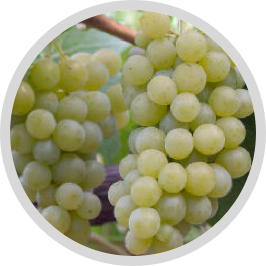
Chenin Blanc
Summery Sweet
Known in the Anjou and Touraine districts of the Loire Valley as the Pineau de la Loire, the Chenin Blanc grape lends itself to an extraordinary range of styles, from bracing, bone-dry Savennieres and Vouvrays (there is also a sparkling version), to medium-dry or demi-sec, wines, to some of the world's most staggeringly rich late-harvest wines made in years that benefit from the arrival of botrytis. general characteristics of Chenin Blanc include citrus...
READ MORE
Similar Grapes
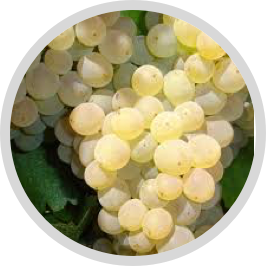
Grenache Blanc
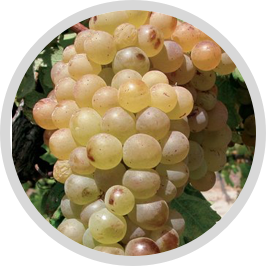
Vermentino
Chenin Blanc
Summery Sweet
Known in the Anjou and Touraine districts of the Loire Valley as the Pineau de la Loire, the Chenin Blanc grape lends itself to an extraordinary range of styles, from bracing, bone-dry Savennieres and Vouvrays (there is also a sparkling version), to medium-dry or demi-sec, wines, to some of the world's most staggeringly rich late-harvest wines made in years that benefit from the arrival of botrytis. general characteristics of Chenin Blanc include citrus fruits, peach, pear, apple, and quince; spring flowers and honeysuckle; occasionally a lanolin/wet wool element; and assertive mineral and earthy notes, sometimes reminiscent of fresh, sweet mushrooms.
Chenin Blancs in both dry and sweet styles are noted for their longevity -- especially those from Vouvray. The very sweetest bottlings from Chenin Blanc are among the longest-lived nonfortified wines in the world. Note that, compared to Sauternes for example, sweet wines from the Loire Valley are lower in alcohol, higher in acidity, and dominated by the aromas and flavors of fruit rather than oak barrels.
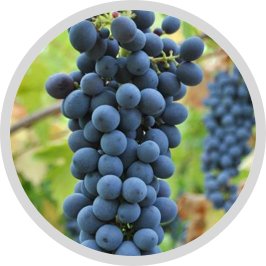
Corvina
Brings the Bite
Corvina is an Italian red wine grape most famous as a key constituent of Valpolicella wines, along with Rondinella. Its most commonly cited characteristic is its sour cherry flavor, as well as its lack of color and tannin - Corvina wines tend to be bright red and lighter in structure. The variety also lends itself well to the apassimento process of air-drying grapes, used to make the famous Amarone wine. Corvina is widely planted in Italy's northeastern corner...
READ MORE
Similar Grapes

Cabernet Sauvignon

Petit Verdot
Corvina
Brings the Bite
Corvina is an Italian red wine grape most famous as a key constituent of Valpolicella wines, along with Rondinella. Its most commonly cited characteristic is its sour cherry flavor, as well as its lack of color and tannin - Corvina wines tend to be bright red and lighter in structure. The variety also lends itself well to the apassimento process of air-drying grapes, used to make the famous Amarone wine.
Corvina is widely planted in Italy's northeastern corner, making DOC, DOCG and IGT wines. In Valpolicella, Bardolino and Amarone wines, Corvina makes up the bulk but not the whole: 100-percent Corvina wines must be made under the regional IGT title. As with the famed Super Tuscans, top producers have not let this put them off making prestigious, concentrated wines, and many top Corvina-based wines are labeled IGT. In blends, Corvina's high level of acidity and distinctive cherried, herbaceous flavors are essential to the character of the wine.
The variety ripens very late, which can be an issue for growers, but thick skins means that Corvina lends itself well to air-drying. Grapes are spread on straw mats after picking and can develop phenols and sugars, while drying out to concentrate flavors. This is the method employed in the production of Amarone and Recioto della Valpolicella wines, and to a lesser extent the region's Ripasso wines.
Corvina has dipped in and out of popularity in the last century, with excessive yields contributing to Valpolicella's poor reputation in the 1980s. This has been rectified in recent years, with producers experimenting with the grapes: barrel-aging has proved popular, as have longer maceration times to extract color. The result has been a welcome upsurge in quality.
While Corvina is an important variety in its Italian homeland, it is yet to spread across the world: only Australia and Argentina have made progress with Corvina-based wines.
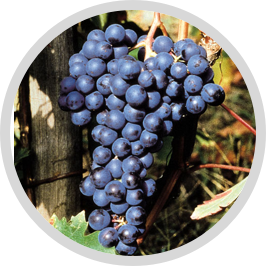
Dolcetto
Little Sweet One
With Barbera, Dolcetto is one of the two "everyday" wines of the Piedmont region in Italy. While the most favorable growing sites here are reserved for Barolo and Barbaresco, winemakers plant Dolcetto widely where the temperamental Nebbiolo grape doesn't thrive. As Dolcetto is not made to age, but rather intended for more immediate consumption, these plantings allow the same winemakers who produce Barolo and Barbaresco to earn immediate revenue while...
READ MORE
Similar Grapes

Barbera

Bonarda
Dolcetto
Little Sweet One
With Barbera, Dolcetto is one of the two "everyday" wines of the Piedmont region in Italy. While the most favorable growing sites here are reserved for Barolo and Barbaresco, winemakers plant Dolcetto widely where the temperamental Nebbiolo grape doesn't thrive. As Dolcetto is not made to age, but rather intended for more immediate consumption, these plantings allow the same winemakers who produce Barolo and Barbaresco to earn immediate revenue while their Nebbiolo wines mature.
Translating into English as "little sweet one", Dolcetto makes brightly colored wines, reddish-purple in hue, with aromas of blackberries and plums. We find these wines to be a great source of immediate gratification. On release, they are generally wonderfully fruity, with soft tannins. Really, there's little reason to hold onto Dolcetto for much longer than a year, after which its youthful fruit character starts to fade.
Dolcetto is especially versatile with food. We find it's a lifesaver in certain restaurant situations when folks are ordering all over the place. There's some acidity, and some tannins, but not too much of either of these qualities to eliminate certain food options. Thus, it won't overwhelm more delicate seafood dishes, but will remain right at home with tomato-based pastas or meat dishes.
The grape is not without challenges in the winery. One downside to Dolcetto is its tendency toward reduction. The more concentrated the Dolcetto, the more oxygen is needed during the vinification. Many top producers in Piedmont are now using micro-oxygenation to guard against reduction.
These top producers can be found both in the Piedmontese towns of Alba and Dogliani. Some, but not all of them are also known for their Barolo and Barbaresco production. Look for wines from Luciano Sandrone, Luigi Einaudi, and Conterno Fantino.
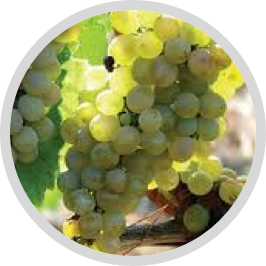
Fiano
As Ancient As the Romans
Fiano is a high-quality, white-wine grape variety used widely in southern Italy, particularly in Campania. Used mainly as a varietal wine, Fiano is nutty and textured with floral and honeyed notes, spice and tropical fruit flavors like pineapple. Its main incarnation is as Fiano di Avellino DOCG wine. The variety has been grown in southern Italy for hundreds of years, and many researchers have suggested that this is one of Pliny the Elder's viti apiane...
READ MORE
Similar Grapes
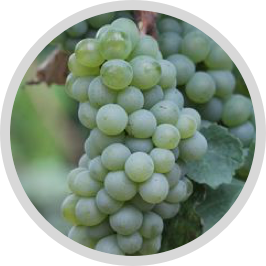
Godello
Fiano
As Ancient As the Romans
Fiano is a high-quality, white-wine grape variety used widely in southern Italy, particularly in Campania. Used mainly as a varietal wine, Fiano is nutty and textured with floral and honeyed notes, spice and tropical fruit flavors like pineapple. Its main incarnation is as Fiano di Avellino DOCG wine.
The variety has been grown in southern Italy for hundreds of years, and many researchers have suggested that this is one of Pliny the Elder's viti apiane (although this is now widely contested). The first mention of Fiano comes in the 13th Century, and just prior to the phylloxera crisis of the late 19th Century, the grape was widely planted in Campania. Following phylloxera's devastating effects, the grape was almost forgotten until the 1970s and 1980s, when it was rediscovered first by local producers and then by consumers. Now, wines made from Fiano are very much in vogue, and are found on wine lists around the world.
Fiano thrives in the volcanic soils of the Apennine Mountains. Terroir is particularly important to Fiano, and can have a big impact on the finished wines, which range in style from taut and minerally to nutty and rich. Fiano can develop a sweetness that makes it extremely attractive to bees, as referenced by its traditional name, Vitis apiana ("the vine beloved of bees").
Many winemakers use various winemaking techniques to play up Fiano's natural qualities. The most important of these is lees contact, a process where the wine is left to mature with the by-products of fermentation: dead yeast cells, seeds and skin fragments, as well as other particles. This contact can add texture and weight to the finished wines, as well as added flavor.
While Fiano is best known for its dry wines, it is also made into dessert wines, usually through the traditional Italian method of air-drying. Sweet Fiano wines are luscious and textured, developing dried fruit flavors like fig and prune.
In Sicily, Fiano is gaining attention as a varietal wine, and in Puglia it is permitted in the Martina Franca DOC. A handful of Fiano vines are also planted in South Australia and the United States. The best examples can improve with 2-3 years of bottle age.
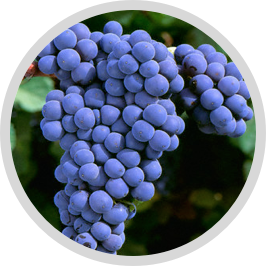
Gamay
Rising From the Ashes
Gamay is the primary grape of Beaujolais, a region administratively considered part of the Burgundy wine growing region, but one that has a climate closer to that of the Rhone. Wine produced here appears in your glass in essentially three forms:
1) Nouveau: Released to the public every year on the third Thursday of November, this is not a wine that's had much time to develop any finesse; sometimes it's even bottled while still fermenting...
READ MORE
Similar Grapes

Barbera

Bonarda

Dolcetto
Gamay
Rising From the Ashes
Gamay is the primary grape of Beaujolais, a region administratively considered part of the Burgundy wine growing region, but one that has a climate closer to that of the Rhone. Wine produced here appears in your glass in essentially three forms:
1) Nouveau: Released to the public every year on the third Thursday of November, this is not a wine that's had much time to develop any finesse; sometimes it's even bottled while still fermenting. It doesn't have any body, and in bad years, the flavor reminds us of paint thinner. The excitement it causes, at restaurant events timed for its release, can best be attributed to harvest frenzy, coupled with some very shrewd promotion on the part of the growers.
Nouveau doesn't really taste like other wines. There's something fresh and assertive about the flavors, and the bouquet is often strongly chemical. The explanation for this is the unconventional (and fortunately, unique) nature of vinification:
What happens is that grapes from the field are loaded into a tank and covered with an atmosphere of carbon dioxide. Under the blanket of gas, the grapes stay alive and begin to metabolize their own sugar into alcohol without the help of yeast. The grapes can produce as much as two percent alcohol all by themselves. While they're at it, they also produce byproducts like glycerol, methanol (wood alcohol), and acetylaldehyde, which can sometimes give the wine a paint-thinner aroma.
Meanwhile, down at the bottom of the tank, some of the grapes have been crushed by the weight of the ones above. Their juice comes in contact with the yeast on the skins, and a regular fermentation starts. After a week or so, the tank is emptied, and all the grapes are crushed and the juice collected. The juice that fermented inside the grape is mixed with the stuff that was already fermenting, and the whole tank ferments rapidly to completion. The process is called carbonic maceration. It preserves a lot of the freshness of the grapes and accounts for the cidery vigor of the wine. Its power to create a whole slew of flavor chemicals is why the Nouveau tastes so peculiar.
2) Beaujolais Villages: Carbonic maceration and fresh fruit flavors are also characteristic of this more refined drink from the hilly central part of the Beaujolais district. The extra finesse comes from better vineyards, lower yields, and also from its not being pressed early and hurried through fermentation. If the wine is no more than a year or two old, you can usually count on a reliable, tasty drink at a bargain price. Serve at 50-55F (10-12C).
Incidentally, the Loire Valley regions of Gamay, Vouvray, and Anjou are also good sources for inexpensive, fruit-driven wines made from Gamay. These are good proxies for Beaujolais Villages wines.
3) Cru Beaujolais: Vastly under appreciated, these wines come from the best vineyards in the north-central part of the region. They can show remarkable concentration and longevity while still boasting a bundle of Gamay flavor. At this writing, they are about twice as costly as a Nouveau Beaujolais and are, for the fruity-wine lover, a great bargain. These cru Beaujolais can take on Pinot-like characteristics, and pair well with foods like roast chicken or grilled salmon.
Unfortunately, they usually don't carry the name Beaujolais on the label. To find them, you will have to remember their individual names: Brouilly, Côtes de Brouilly, Chenas, Chiroubles, Fleurie, Julienas, Moulin-à-Vent, Morgon, Regnié, and St. Amour. Our favorite producers here include Domaine Marcel Lapierre and Domaine Louis-Claude Desvignes.
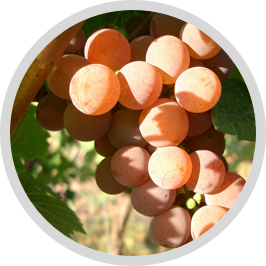
Gewurtztraminer
You Can't Miss It
One of the wine world's love-it-or-hate-it grapes, Gewürztraminer is for many wine lovers the signature variety of Alsace. Its highly perfumed aromas of rose petal, smoked meat, lychee, grapefruit, and spices are immediate and captivating, although some examples lack refinement and seem a bit blowzy owing to low acidity and high alcohol. Gewürztraminer is as unlike the steelier, more aristocratic Riesling as a white grape can be. No other region of the world...
READ MORE
Similar Grapes
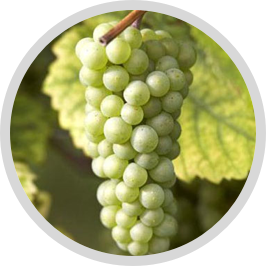
Riesling

Torrontes
Gewurtztraminer
You Can't Miss It
One of the wine world's love-it-or-hate-it grapes, Gewürztraminer is for many wine lovers the signature variety of Alsace. Its highly perfumed aromas of rose petal, smoked meat, lychee, grapefruit, and spices are immediate and captivating, although some examples lack refinement and seem a bit blowzy owing to low acidity and high alcohol. Gewürztraminer is as unlike the steelier, more aristocratic Riesling as a white grape can be. No other region of the world has been able to produce significant quantities of Gewürztraminer that even approach the decadent richness and exotic fruit qualities that the best producers in Alsace achieve. Still, other than late-harvest versions, Gewürztraminer is normally a dry wine in Alsace, despite smelling like a sweet one. Gewürztraminer marries beautifully with rich, fatty dishes like pork and goose or ripe cheeses, as well as with the exotic spices of Moroccan, Indian, and Far Eastern cuisines.

Godello
A Spanish Survivor
Godello is a white-wine grape originating in the northwest of Spain, probably from the province of Galicia (just north of Portugal); it is said to reach its acme in the small Valdeorras appellation within Galicia, and does not seem to be grown much elsewhere (though it may be that some Portugese plantings under another name are also really Godello). Godello is another modern "rescue project": by the 1970s, the grape was nearly extinct, but a couple of enthusiastic...
READ MORE
Similar Grapes

Fiano
Godello
A Spanish Survivor
Godello is a white-wine grape originating in the northwest of Spain, probably from the province of Galicia (just north of Portugal); it is said to reach its acme in the small Valdeorras appellation within Galicia, and does not seem to be grown much elsewhere (though it may be that some Portugese plantings under another name are also really Godello).
Godello is another modern "rescue project": by the 1970s, the grape was nearly extinct, but a couple of enthusiastic advocates brought it to world attention with striking renditions, and it is today a major player in Spain and, increasingly, on the world stage. Godello is now one of Spain's two premier white wines, sitting beside Albariño in that capacity.
Because it is still a developing effort, the wines can be found in quite a variety of styles (not unlike Chardonnay, to which some compare it). One key difference in styles (again as with Chardonnay) is the presence or absence of oak in the vinification: steel-tank Godellos tend to have, as one writer puts it, "a fresher, livelier quality", with more minerality and forward fruit; oak-aged Godellos tend, in that same critic's words, to be "richer, fuller wines", often with the "creamy" quality that comes of lees contact. The difference may be more a matter of personal taste than of better/worse, though not a few wine writers have expressed a clear preference for the unoaked versions (though others much prefer the oak). One regional winemaker remarked that he, too, prefers the unoaked style, but also makes an oaked version just for the American market.
The essence of Godello (or at least unoaked Godello) seems to be minerality and acidity, but the extra that distinguished it from many other serviceable varieties with those qualities is a richness of fruit and wildflower flavors and a somewhat denser body than the usual all-mineral white wine.
Note that Godello is sometimes confused with Verdelho, which is a different grape, but was (and is) a name sometimes used for Godello, and also the Portugese Gouveio, because Gouveio was often used as a name for true Verdelho (yes, the world is a funny old place).
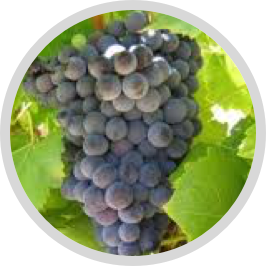
Grenache
Strong Mediterranean Reds
One of the more versatile red grapes in the world, Grenache thrives in southern France and Spain (where it is known as Garnacha). Ranging in style from light and fruity to deep, brooding and intense; the grape also suits a variety of ambitions: Grenache can be used in inexpensive wines that offer immediate satisfaction, but it is also successful in barrel-aged, cellar-worthy wines that don't come cheaply. Grenache vines tend to perform best in dry and hot...
READ MORE
Similar Grapes

Bonarda
Grenache
Strong Mediterranean Reds
One of the more versatile red grapes in the world, Grenache thrives in southern France and Spain (where it is known as Garnacha). Ranging in style from light and fruity to deep, brooding and intense; the grape also suits a variety of ambitions: Grenache can be used in inexpensive wines that offer immediate satisfaction, but it is also successful in barrel-aged, cellar-worthy wines that don't come cheaply.
Grenache vines tend to perform best in dry and hot growing regions. For example, in the southern Rhone, Grenache is the dominant grape in the appellation of Chateauneuf-du-Pape, which has emerged within the last decade as one of the "hottest" categories in the North American market. These wines are generally 75-80 percent Grenache, generally with some Syrah and Mourvedre blended in to provide color, spiciness, and complexity. Even in the space of this one appellation, we find that wines range from restrained middleweight entries to low-alcohol, high-acid powerhouses that ooze ripe fruit. The latter wines are responsible for much of the current attention being paid to the area. For rich, Grenache-dominated wines, look to bottlings from Clos du Caillou, Deomaine de Marcoux, and Chateau Rayas.
Elsewhere in the Rhone Valley, many wines produced under the Cotes du Rhone appellation are also dominated by Grenache. Compared to Chateauneuf-du-Pape, these wines are significantly less expensive and can't compare with regard to richness and intensity. Still, we can recommend the more interesting entries on their own merits: bright fruit flavors and immediacy. Look to Chateau Pesquié and Chateau de Segriés.
Further down the Mediterranean, Grenache (or, rather, Garancha) shines in the up-and-coming Spanish region of Priorat. In this rugged, rocky area in Catalonia, ancient vineyards have recently been upgraded, and production has shifted from bulk wines to high-quality bottlings. These wines are either 100 percent Garancha, or they also have some Carignane blended in. Expect inky wines with both sweetness and spice. We like the offerings from Cellar Vall Llach and Clos Erasmus.
Rhone varieties have become increasingly popular in New World vineyards, and Grenache is no exception here. In California and Australia, these wines can be even more rich and luscious than their Old-World cousins. From California, we recommend wines from Alban Vineyards and Beckmen Vineyards; while in Australia, we like Clarendon Hills.
Single varietal Grenache wines as well as Grenache-dominated blends are best paired with grilled meats, stews, and game.

Grenache Blanc
A White Grape With Backbone
renache Blanc (Garnacha Blanca in Spain) is the light-skinned form of Grenache Noir. Although it is native to northern Spain, Grenache Blanc is best known for its role in southern French white wines and in particular as a member of the Chateauneuf-du-Pape blend. The light-golden, straw-colored juice of Grenache Blanc is increasingly produced as a varietal wine, though its use as a softener in a blend is still more common. It typically...
READ MORE
Similar Grapes

Chardonnay

Vermentino
Grenache Blanc
A White Grape With Backbone
Grenache Blanc (Garnacha Blanca in Spain) is the light-skinned form of Grenache Noir. Although it is native to northern Spain, Grenache Blanc is best known for its role in southern French white wines and in particular as a member of the Chateauneuf-du-Pape blend.
The light-golden, straw-colored juice of Grenache Blanc is increasingly produced as a varietal wine, though its use as a softener in a blend is still more common. It typically displays green-apple and stonefruit aromas, though it is very sensitive to its environment and this will have a profound effect of the final wine.
In hot and dry climates such as that found in Roussillon (where about a third of France's Grenache Blanc is grown), the variety can struggle to achieve good acidity. However, like its black-skinned relative, Grenache Blanc is highly resistant to drought and its tenacity serves it well in windy, arid regions. It is also a vigorous vine that can reach high alcohol levels if left unchecked.
In Spain, Garnacha Blanca is grown in the northeast and is most commonly blended as part of various regional wines, particularly in Priorat and Terra Alta. Because it is regarded more as a behind-the-scenes workhorse, the words "Garnacha Blanca" or "Grenache Blanc" do not often appear on the front label of wines in Spain and France respectively.
In California, Grenache Blanc is widely grown on the Central Coast, in particular San Luis Obispo. The cooler southern reaches of the region allow the variety to develop crisper acidity and more mineral characteristics.
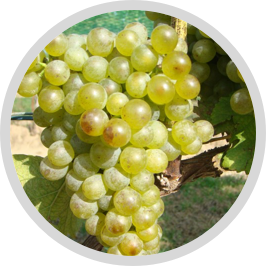
Gruner Vetliner
Austria's Best Kept Secret
inding Gruner Veltliner, a wine known for its spicy minerality and firm acidity, used to be a real challenge in the United States. But even though Austrians still keep the bulk of the wine that they produce for themselves, Gruner Veltliner, the most distinctive and widely grown grape in Austria, is rapidly gaining popularity elsewhere thanks to its food-friendliness and engaging complexity. In Austria's Niederösterreich region, along the Danube River north...
READ MORE
Similar Grapes

Fiano

Godello
Gruner Vetliner
Austria's Best Kept Secret
Finding Gruner Veltliner, a wine known for its spicy minerality and firm acidity, used to be a real challenge in the United States. But even though Austrians still keep the bulk of the wine that they produce for themselves, Gruner Veltliner, the most distinctive and widely grown grape in Austria, is rapidly gaining popularity elsewhere thanks to its food-friendliness and engaging complexity.
In Austria's Niederösterreich region, along the Danube River north of Vienna, Gruner Veltliner grows at its finest in terraced vineyards, on slopes so steep that they can barely retain any soil. Some Riesling is planted in these prized locations, but not nearly as much as Gruner Veltliner: on the whole, its plantings make up 36% of all Austrian vineyards.
Within Niederösterreich, plenty of Gruner Veltliner grows in the Weinviertel, just to the northeast of Vienna. Here, the vines grow in deep clay soils, and fruit is made into simple wines, consumed young in the many wine pubs of Vienna.
The terraced vineyards are found farther west, in the regions of Kremstal, Kamptau, and Wachau. Here, what soil does remain is heavily granite in composition, imbuing the wines with hefty stony character. Wines from Wachau are especially prized for their depth and power. In the Kremstal and Kamptau, soils retain their minerality but are still lighter than those in Wachau. Consequently, wines are somewhat more elegant: still steely but not as intense. Thanks to their acidity, wines from all three regions will age well, shedding some of their initial vegetal characteristics while gaining increased spiciness and complexity. Look for bottlings from Huber, Schloss Gobelsburg, and Prager.
Gruner Veltliner is an especially food-friendly wine: it works well with the traditional partners for mineral-rich, high-acid white wines-- chicken and fish, but it also can handle more challenging matches, like asparagus and artichokes.
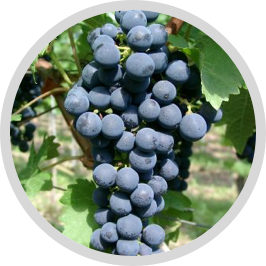
Lambrusco
Looking Lively
Lambrusco is a brightly colored grape variety used to make sparkling red wines in Emilia-Romagna, northern Italy. More accurately, it is a collective term for a group of grape varieties (much like Muscat) – more than 60 Lambrusco varieties have been identified so far. Lambrusco vines are grown in several Italian wine regions, including Piedmont (Emilia-Romagna’s neighbor) and farther afield in Basilicata. Lambrusco and its eponymous wine have a high profile...
READ MORE
Similar Grapes

Barbera

Dolcetto
Lambrusco
Looking Lively
Lambrusco is a brightly colored grape variety used to make sparkling red wines in Emilia-Romagna, northern Italy. More accurately, it is a collective term for a group of grape varieties (much like Muscat) – more than 60 Lambrusco varieties have been identified so far. Lambrusco vines are grown in several Italian wine regions, including Piedmont (Emilia-Romagna’s neighbor) and farther afield in Basilicata.
Lambrusco and its eponymous wine have a high profile in the early 21st Century, largely the result of mass production for major markets in the 1980s, particularly the United States and northern Europe. The days when Lambrusco wines were widely bottle-fermented in the methode traditionelle have gone, as has much of the quality and care that accompanied this more demanding production technique. Today, most wines bearing the Lambrusco name are made in bulk, and go through their secondary fermentation in large steel tanks. This is known as the Charmat (or tank) method, pioneered in northern Italy and also used in the production of Prosecco. The popularity of Lambrusco grew so rapidly in the 1980s that this was the only way of producing the required volumes quickly enough to satisfy demand and cheaply enough to keep the wines affordable.
The pigment of Lambrusco grapes works well to create an alluring ruby color in wines; and when allowed to reach full phenolic ripeness, the grapes create a wine as intensely perfumed it is colored. Lambrusco’s bright purple-red hue is surpassed only by that of Ancellotta, another variety sanctioned for use under the Lambrusco DOC laws. Ancellotta grapes are used to bring color to the kind of watery, overcropped Lambrusco produced when yields are allowed to climb out of control.
A number of Lambrusco sub-varieties have their own DOC, namely Lambrusco di Sorbara, Lambrusco Grasparossa di Castelvetro and Lambrusco Salamino di Santa Croce. In addition to these there is the Modena DOC (created in 2009) and Reggiano, which was formerly known as Lambrusco di Reggiano. A wine made under any one of these titles must be made from at least 85 percent Lambrusco grapes (some are tied to specific sub-varieties, some are not). The remaining 15 percent is often made up with Ancellotta.
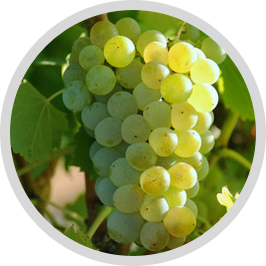
Macabeo
Fruity Traveller
Macabeo is a white wine grape used on either side of the Pyrenees, in the north and east of Spain and the southernmost reaches of France. A relatively versatile grape, it is used in still, sparkling, dry and sweet wines. There are few universal truths about how Macabeo tastes; the wines can be fresh, floral and aromatic when harvested sufficiently early and aged in stainless steel, but weighty, honeyed and nutty when aged in oak and harvested slightly later...
READ MORE
Similar Grapes

Chardonnay

Chenin Blanc
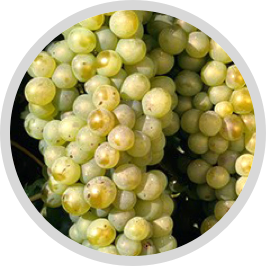
Semillon
Macabeo
Fruity Traveller
Macabeo is a white wine grape used on either side of the Pyrenees, in the north and east of Spain and the southernmost reaches of France. A relatively versatile grape, it is used in still, sparkling, dry and sweet wines. There are few universal truths about how Macabeo tastes; the wines can be fresh, floral and aromatic when harvested sufficiently early and aged in stainless steel, but weighty, honeyed and nutty when aged in oak and harvested slightly later.
Spain is unquestionably Macabeo's homeland, most obviously the northern regions. It is the principal ingredient in white wines from Rioja, where the locals call it Viura, and it is used in almost every wine district of Catalonia, particularly in sparkling Cava wines, where it is blended with Parellada and Xarel-lo.
Southwards along the Mediterranean coast, Macabeo can be found in various areas, most notably Valencia, Yecla and Jumilla. In France (as Maccabeu) the variety is well respected but significantly less common, and limited almost exclusively to the southern parts of Languedoc-Roussillon.
France has just a couple of thousand hectares of Macabeo (just one-fifteenth that planted in Spain), almost all of which is in Roussillon. The variety is used there in both sweet wines (white Banyuls and Maury) and rich dry wines (Corbieres and Minervois). It is not an overly aromatic grape and its relative neutrality makes it a good candidate for blending. When picked early, varietal Macabeo can show grapefruit flavors with pronounced acidity, but when picked later, the wines generally taste more of oak than anything else.
Macabeo must is quite resistant to oxidation, in no small part due to its high levels of antioxidant resveratrol monomers (trans-piceid, cis-piceid, trans-resveratrol, and cis-resveratrol). This made it a traditionally popular option with winemakers in Rioja, where barrel aging is relatively common and inevitably involves a certain amount of oxygen exposure. Rioja's red wines have traditionally permitted a certain amount of white wine to be used in red winemaking, and Macabeo (Viura) was an obvious choice here.
Macabeo grapes can be used on their own but are most commonly combined with other local varieties; in Rioja with Malvasia and Garnacha Blanca and in Catalonia alongside Parellada and Xarel-lo.
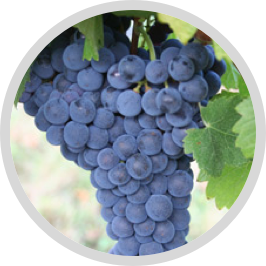
Malbec
Argentina's Adopted Prodigy
The Malbec grape may have originated in southwest France, where it still is grown under the name Cot. However, the grape's international profile has surged not because of what's going on in France, but rather because of current trends in Argentina. Malbec came to Argentina in the late nineteenth century, before the Phylloxera epidemic punished European vineyards, necessitating grafting of fruiting wood onto rootstocks that aren't native to Europe...
READ MORE
Similar Grapes

Cabernet Sauvignon
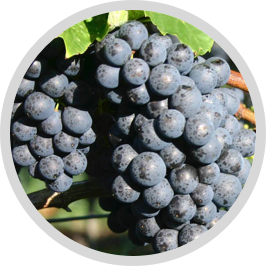
Petit Verdot
Malbec
Argentina's Adopted Prodigy
The Malbec grape may have originated in southwest France, where it still is grown under the name Cot. However, the grape's international profile has surged not because of what's going on in France, but rather because of current trends in Argentina.
Malbec came to Argentina in the late nineteenth century, before the Phylloxera epidemic punished European vineyards, necessitating grafting of fruiting wood onto rootstocks that aren't native to Europe. In Argentina, which was never subject to the epidemic, most of these vines are not grafted. Instead, vines grow on their own roots. But if escaping the blight of Phylloxera provided a start, the key reasons for the recent emergence of the grape are improvements both to viticulture and vinification.
Argentine producers have dramatically cut yields and replaced large old wood casks with oak barriques. They've taken more care in selecting appropriate planting sites, developing cooler, high altitude vineyards that benefit from warm days and cool nights. International consultants have arrived, too, imparting up-to-date knowledge about vinification techniques as well as a sense of what style of wines compete successfully in the international wine market.
Some are critical of this trend, arguing that it leads to homogenization of wine styles. Maybe so, but we still feel that some of these improvements are certainly welcome, for the best Malbecs are polished, structured, and concentrated, but still showcase the local terroir. The results are clear: Malbec was once produced almost entirely for the domestic marketplace, but now bottles marked $50 dollars or higher sell briskly in the international marketplace. But you need not spend that much money for a solid example of this varietal: there are plenty of compelling and satisfying wines in the $15-25 dollar range.
With these wines, you can expect deep red colors and intense flavors, with notes of blackberry, plum, leather, and pepper. Many have the necessary structure to age for a decade or more. We've been impressed with wines from Vina Alicia, Val de Flores, and Terrazas de los Andes.
Argentina is known as much for its grass-fed beef as it is for its red wines. The affinity between the two is more than just geographical-- with its robust tannins, Malbec makes a natural partner for steak.
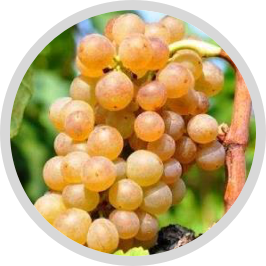
Marsanne
Traditional Traveller
Marsanne, the most widely planted white grape of the northern Rhone Valley, has a long history-- not in single varietal bottlings, but rather as a blending grape. In Hermitage, Marsanne is blended with Roussane to produce the white wine of the appellation; in our opinion, white Hermitage is one of the most overlooked great wines of the world. Incidentally, along with Roussane, up to 15% of Marsanne can be added to the red wines of Hermitage under AOC regulations...
READ MORE
Similar Grapes

Chardonnay
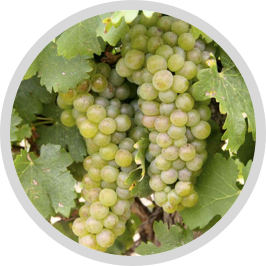
Viognier
Marsanne
Traditional Traveller
Marsanne, the most widely planted white grape of the northern Rhone Valley, has a long history-- not in single varietal bottlings, but rather as a blending grape. In Hermitage, Marsanne is blended with Roussane to produce the white wine of the appellation; in our opinion, white Hermitage is one of the most overlooked great wines of the world. Incidentally, along with Roussane, up to 15% of Marsanne can be added to the red wines of Hermitage under AOC regulations. For a stellar example of white Hermitage, try Chave's Hermitage Blanc.
Apart from these origins in the Rhone, Marsanne plantings have expanded in Australia, so much that now 80% of the world's Marsanne is grown there. The grape was first planted in Australia in 1860, and while most of these original vines are gone, the wines in the vineyard of Chateau Tahbilk, in Victoria, are among the oldest in the world, dating to 1927.
A number of challenges in viticulture stand in the way of single varietal Marsanne exploding in popularity. The grape is highly sensitive to extreme temperatures: when the climate is too warm, Marsanne is short on acidity, limiting its ability to age well; when climate is too cool, the wines tend to be neutral and uninteresting. One strategy employed by winemakers is to harvest Marsanne just before it hits full ripeness, in order to retain some acidity.
When Marsanne is bottled on its own, expect a light straw colored wine that is rich in body, with hints of spice, melon and pear. Noteworthy new world producers of the grape include the aforementioned Chateau Tahbilk as well as Tablas Creek in Paso Robles, California. But, ultimately, for the best expression of this grape, even blended, stay in the northern Rhone.
Pair Marsanne and its related blends with shellfish and seafood.
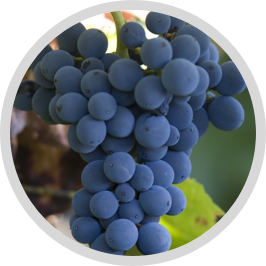
Mencia
Spanish New Wave
Mencia is a red-wine grape native to the northwest of Spain. It is most commonly associated with the red wines of Bierzo, which were once light and astringent but, since the discovery of low-yielding vines planted on poor soils high on the hills, have become more intense and concentrated, attracting the attention of the wine-drinking world. Mencia wines tend to exhibit earthy, vegetal characters with berry nuances and stony minerality...
READ MORE
Similar Grapes

Barbera

Dolcetto
Mencia
Spanish New Wave
Mencia is a red-wine grape native to the northwest of Spain. It is most commonly associated with the red wines of Bierzo, which were once light and astringent but, since the discovery of low-yielding vines planted on poor soils high on the hills, have become more intense and concentrated, attracting the attention of the wine-drinking world. Mencia wines tend to exhibit earthy, vegetal characters with berry nuances and stony minerality.
The variety, with its thick-skinned, violet-blue grapes, was once thought to be related to Cabernet Franc. Modern DNA testing has disproved this theory, however, but has uncovered that it is in fact genetically identical to Portugal's Jaen. This has led to some uncertainty as to the origin of the variety: while most signs point to Bierzo as Mencia's home, it could well have been brought there from Dao in Portugal.
Mencia's role as a simple, regional grape variety used to make table wines has been challenged in recent years following the attention of famous Spanish producer Alvaro Palacios, one of the pioneers of the Priorat region in Catalonia. Old vines and Bierzo's dramatic, high-altitude terroir have proved useful for the quality of the wines, helped along by improved viticultural methods and extra vigilance in the winery. Wines today are more likely to have a bright complexion with a vivid maroon color, fresh acidity and tannins, and dark-fruit flavors with a herbal dimension of mint or thyme.
Mencia is quite fussy in the vineyard, and has a tendency toward low yields, making it a challenging prospect for growers and winemakers. It is susceptible to botrytis and mildew, and can lose its characteristic acidity quickly if not harvested promptly. Mencia's high alcohol and high acidity must be kept in check to retain the wine's balance. Oak is used sparingly, as it can overwhelm Mencia's rather delicate flavor profile. Some producers are experimenting with carbonic maceration to accentuate the variety's fruit characteristics and reduce tannins.
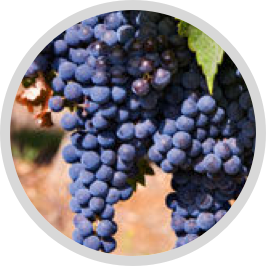
Merlot
Fruitful and Friendly
Merlot enjoyed a surge in popularity in the 1990s as consumers suddenly discovered that they could enjoy aromas and flavors similar to those of Cabernet in a fleshier, softer wine with smoother tannins. A wave of Merlot plantings followed, frequently in soils and microclimates completely inappropriate for this variety, and the market was soon flooded with dilute bottles from young vines and high crop levels, and weedy, herbaceous examples from underripe fruit...
READ MORE
Similar Grapes

Cabernet Franc

Cabernet Sauvignon
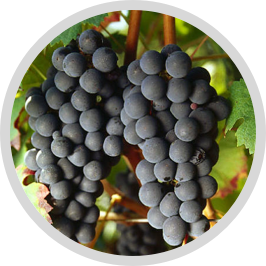
Carmenere
Merlot
Fruitful and Friendly
Merlot enjoyed a surge in popularity in the 1990s as consumers suddenly discovered that they could enjoy aromas and flavors similar to those of Cabernet in a fleshier, softer wine with smoother tannins. A wave of Merlot plantings followed, frequently in soils and microclimates completely inappropriate for this variety, and the market was soon flooded with dilute bottles from young vines and high crop levels, and weedy, herbaceous examples from underripe fruit. Many of these undernourished wines were overoaked in attempts to mask their deficiencies. Over the same period, a number of Cabernet producers began picking riper fruit and doing a better job managing their tannings during the making and aging of their wines. The result was an upswing of powerful, satisfying Cabernets that were far less austere in their youth -- and a sharp decline in interest in Merlot.
Still, California's best Merlots, some of which predated the vogue for this variety in the 1990s, continue to be some of the finest examples of this variety outside Bordeaux -- in the same quality league with wines from Washington State and Italy's Tuscan coast region. Expect to find broad, supple wines with medium to full body, typically with aromas and flavors of black cherry, plum, dark berries, dark chocolate, tobacco, and earth, and suave, fine-grained tannins. Merlot also rules in Pomerol, and nowhere in the world does this variety make more complete wines than on the flat, clay-rich plateau that lies at the heart of this appellation.
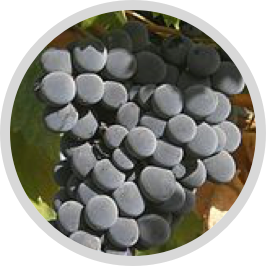
Montepulciano
Likeably Easy
Montepulciano is a red wine grape variety grown widely in central Italy, most notably its eastern Abruzzo, Marche and Molise regions. The variety was named after the Tuscan parish of Montepulciano, but, confusingly, is not used in the famous wines produced there (see Vino Nobile di Montepulciano). Globally appreciated for their soft flavors, strong color and gentle tannins, Montepulciano wines are typically best consumed in their youth and with food...
READ MORE
Similar Grapes

Carmenere

Merlot
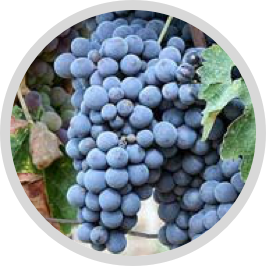
Sangiovese
Montepulciano
Likeably Easy
Montepulciano is a red wine grape variety grown widely in central Italy, most notably its eastern Abruzzo, Marche and Molise regions. The variety was named after the Tuscan parish of Montepulciano, but, confusingly, is not used in the famous wines produced there (see Vino Nobile di Montepulciano).
Globally appreciated for their soft flavors, strong color and gentle tannins, Montepulciano wines are typically best consumed in their youth and with food. The deep purple juice of Montepulciano grapes is used in varying proportions to produce wines under roughly 50 of Italy's DOC and DOCG titles. Although sometimes used on its own, it also responds well to blending with other varieties, most successfully Sangiovese – its close relative and Italy's most widely planted grape variety (for more information on these blends, please see Montepulciano – Sangiovese).
At the turn of the new century, Montepulciano was Italy's second most planted red wine variety, just behind Sangiovese and marginally ahead of Barbera. Its popularity is to both the approachable style of the wines it produces, and because the variety gives reliably high yields.
The most famous Montepulciano wines come from the east coast of Italy, specifically the Abruzzo region. Here, vast volumes of Montepulciano are produced on the low hills and flatlands around the Adriatic coast, and marketed under the Montepulciano d’Abruzzo DOC title. Abruzzo's finest examples of Montepulciano come from the region's north, in the Colline Teramane foothills. Although slightly more expensive because of their DOCG status, these nonetheless represent excellent value for money.
Two other star-performing central Italian wines made from Montepulciano grapes are Rosso Conero and Rosso Piceno, both from the Marche region. Despite the fact that these wines are often of higher quality than their mass-produced d'Abruzzo counterparts, they are markedly less famous. This is probably because their names communicate nothing about the grape variety they're made from – something of a marketing disadvantage in the modern, varietal-focused global wine market.
While some grapes (Chardonnay, Muscat and the various Pinot varieties spring to mind) are extremely versatile, and can be used to produce wines of various styles (still, sparkling, dry, sweet), Montepulciano has so far developed a reputation only for its dry red table wines. And while this reputation is largely accurate, a notable exception can be found in the brighter, lighter, cherry-colored Cerasuolo d'Abruzzo.
Small quantities of Montepulciano are grown in New Zealand, Australia and the U.S. Some of these wines show real promise but are still widely regarded as being in the experimental stage.
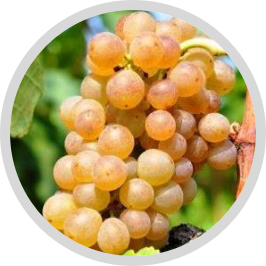
Muscat/Moscato
Effervescent Celebrity
One of the more versatile white wine grapes, Muscat is grown around the world for use in use in light and dry wines, low-alcohol sparkling wines, and sweet, late-harvest wines. Its proliferation around the world (and especially around the Mediterranean) leads us to conclude that Muscat was one of the first domesticated grapes. Indeed, scientists from the University of Pennsylvania have analyzed pots excavated from King Midas's burial mound to...
READ MORE
Similar Grapes

Gewurtztraminer

Riesling

Torrontes
Muscat/Moscato
Effervescent Celebrity
One of the more versatile white wine grapes, Muscat is grown around the world for use in use in light and dry wines, low-alcohol sparkling wines, and sweet, late-harvest wines. Its proliferation around the world (and especially around the Mediterranean) leads us to conclude that Muscat was one of the first domesticated grapes. Indeed, scientists from the University of Pennsylvania have analyzed pots excavated from King Midas's burial mound to conclude that Muscat was a major component of the alcoholic beverage served at his funeral feast.
Even if Muscat is cultivated across the Mediterranean basin and in some New World locales, we find that the best dry expressions of the wine come from Alsace. When vinified dry, to eliminate all residual sugars, Muscat makes a pungently aromatic wine that can handle the two wine killers, asparagus and artichokes. Gewurztraminer may be Alsace's standard-bearer with regard to intensely aromatic wines, but Muscat is no wimp, even if it is a little tamer and more refined. Expect to find notes of ripe peach and apricot, flowers, and fresh herbs. We like wines from Domaine Barmes Buecher and Domaine Ernest Burn.
Many may remember the ubiquitous advertisements for Asti Spumante, the sweet sparkling wine from Piedmont in Italy. This wine is also made from Muscat grapes. We prefer its cousin, Moscato d'Asti, which is bottled within months of the harvest at an even lower alcohol level- sometimes below five percent. This light, sweet, bubbly wine shows exuberant flavors of peach, apricot and pear, and is an outstanding apertif. Its low alcohol is also refreshing at the end of a meal, paired with fresh fruit desserts. Look for wines from Saracco and La Spinetta.
Muscat also makes traditionally-styled, carbonation-free sweet wines in many parts of the world. Some of these are consumed almost entirely within the country of origin, while others do make it onto the international market. Australia has a long history of fortified wine production, especially in the Rutherglen region of northeast Victoria. Here, old stocks of Muscat are blended to produce a non-vintage fortified wine that is typically between 18 and 20 percent alcohol. These bottlings are marked by flavors of caramel, toffee, and exotic spices. Try wines from R. L. Buller and Sons as well as Chambers Rosewood.
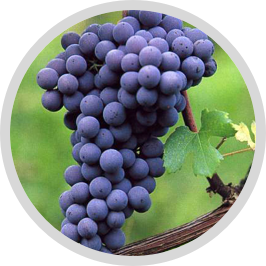
Nebbiolo
Born For Barolo
Nebbiolo based wines made outside the Langhe hills are often lost in the commotion over Barolo and Barbaresco. The provinces of Vercelli and Novarra in the northern reaches of the Piedmont area are home to wines like Carema, Ghemme, and Gattinara. The latter two wines are mostly Nebbiolo, which as traditionally been blended with small percentages of other grapes native to this cool, mountainous region. (Nebbiolo is generally called Spanna in Ghemme and Gattinara)...
READ MORE
Similar Grapes

Malbec
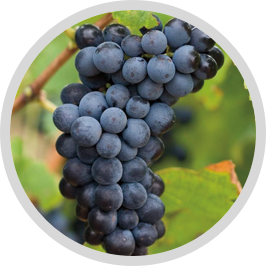
Syrah / Shiraz
Nebbiolo
Born For Barolo
Nebbiolo based wines made outside the Langhe hills are often lost in the commotion over Barolo and Barbaresco. The provinces of Vercelli and Novarra in the northern reaches of the Piedmont area are home to wines like Carema, Ghemme, and Gattinara. The latter two wines are mostly Nebbiolo, which as traditionally been blended with small percentages of other grapes native to this cool, mountainous region. (Nebbiolo is generally called Spanna in Ghemme and Gattinara). Gattinara in particular has a long history of producing high-quality Nebbiolo wines. The wines here tend to be lighter and more graceful than their cousins to the south, though seldom displaying the complexity or concentration of flavor achieved in the Langhe. But fans of traditional Piedmont wines that are free of modern artifice and new oak notes will find plenty of interest in these often gripping and very food-friendly wines. Note that vintages here to not exactly track those of the Langhe. In a hot summer like 2003, when Nebbiolo in Barolo and Barbaresco often lost some of its verve and spine as acidity levels plunged, many vineyards in the hillier northern reaches of Northwest Italy achieved near-perfect ripeness, providing fuller wines than usual without loss of balance or backbone.
Relatively unknown to North Americans are the wines of Valtellina, in the far north of Lombardy, at the foot of the Alps near the Swiss border. These steeply sloped, terraced vineyards were originally home to a host of indigenous varieties but today the wines made here are almost universally based on Nebbiolo (called Chiavennasca here). As might be expected from a relatively cool area, the wines are brighter and more vivacious than their Piedmont counterparts, with less weight and alcoholic richness. Sfursat is a wine made in Valtellina from dried Nebbiolo grapes, a la Amarone.
Of course, some of the best Nebbiolo's come from the Alba area. These Nebbiolo wines may be partly or entirely declassified Barolo and Barbaresco (i.e., juice from young vines or lots that are not up to the producer's standards for its flagship bottlings), or they may come from vineyards outside the closely delimited Barolo and Barbaresco zones. In either case, those Nebbiolo wines are bottled and released much earlier and are suitable for drinking young. Consistently good and often surprisingly affordable Nebbiolo's come from producers like Elio Altare, Aldo Conterno, Paolo Conterno, Bruno Giacosa, Elio Grasso, Prunotto and Produttori del Barbaresco, just to name a few.
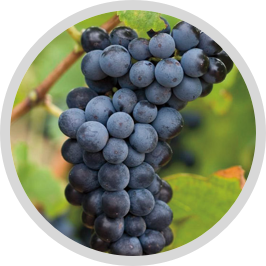
Nero D'Avola
Sicily's Star
Nero d'Avola (also known as Calabrese) is the most important and widely planted red wine grape variety in Sicily. Vast volumes of Nero d'Avola are produced on the island every year, and have been for centuries. The dark-skinned grape is of great historical importance to Sicily and takes its present-day name from the town of Avola on the island's southeast coast. The area was a hotbed of trade and population movement during the Middle Ages and Nero d'Avola was...
READ MORE
Similar Grapes

Nebbiolo

Syrah / Shiraz
Nero D'Avola
Sicily's Star
Nero d'Avola (also known as Calabrese) is the most important and widely planted red wine grape variety in Sicily. Vast volumes of Nero d'Avola are produced on the island every year, and have been for centuries. The dark-skinned grape is of great historical importance to Sicily and takes its present-day name from the town of Avola on the island's southeast coast. The area was a hotbed of trade and population movement during the Middle Ages and Nero d'Avola was frequently used to add color and body to lesser wines in mainland Italy.
Translated, Nero d'Avola means "Black of Avola", a reference to the grape's distinctive dark colouring, but its exact origins are the subject of debate. The region of Calabria can lay claim to the variety via its synonym Calabrese (meaning "of Calabria"), though this term may be a derivation of Calaurisi, an ancient name for someone from Avola.
For most of the 20th Century, Nero d'Avola was used as a blending grape and the name very rarely appeared on wine labels. By the turn of the 21st Century, however, the grape's fortunes had changed considerably, and it is now common to find Nero d'Avola produced as a varietal wine as well. It is often compared to Syrah because it likes similar growing conditions (Sicily has a hot Mediterranean climate) and exhibits many similar characteristics.
Depending on production methods, Nero d'Avola can be made into dense and dark wine that is stored in oak barrels and suitable for aging, or young and fresh wines. Younger wines show plum and juicy, red-fruit flavors, while more complex examples offer chocolate and dark raspberry flavors.
Nero d'Avola typically has high tannins, medium acid and a strong body. However, it can also be very smooth if grown at higher elevations where cooler temperatures restrict the alcohol levels. It thrives on the eastern part of Sicily and is being trialed in Australia and California. Because of its generous color, Nero d'Avola is sometimes produced as rosé wine.

Petit Verdot
Warm Reception
Petit Verdot is a red-wine grape whose small, thick-skinned berries are valued for their depth of color. Traditionally the variety has played a small role in the classic blends of Bordeaux, but varietal Petit Verdot wines are now appearing in many regions of southern Europe, the Americas and Australia. The name Petit Verdot is particularly descriptive of the variety's characteristics. The first half is relatively simple, and indicates the small...
READ MORE
Similar Grapes

Carinena
Petit Verdot
Warm Reception
Petit Verdot is a red-wine grape whose small, thick-skinned berries are valued for their depth of color. Traditionally the variety has played a small role in the classic blends of Bordeaux, but varietal Petit Verdot wines are now appearing in many regions of southern Europe, the Americas and Australia.
The name Petit Verdot is particularly descriptive of the variety's characteristics. The first half is relatively simple, and indicates the small (petit) size of the grape berries. It is clearly contrasted in this regard with its larger-berried cousin, Gros Verdot. The verdot part is a little less obvious. It translates roughly as "green one" and reflects the variety's propensity to under-ripeness; in cool seasons Petit Verdot vines produce bunches speckled with green, unripened berries. (© Proprietary Content, Wine-Searcher)
Due to the high levels of anthocyanins in the berry's thick skins, Petit Verdot wines tend to have a dense, inky, violet-black appearance. They also have high tannin levels, thanks to the small berries – specifically their high ratio of skin and seeds to juice.
The 1960s marked the beginning of a new chapter in Petit Verdot's history. In Bordeaux, the variety's traditional home, many Petit Verdot vines were uprooted, to be replaced with more reliable, more fashionable varieties. Wine consumer preferences (particularly in the U.S.) were changing, in favor of plump, fruity Merlot and regal, structured Cabernet Sauvignon.
The variety's waning fashionability was not helped by the fact that it poses several problems in the vineyard. Petit Verdot vines have relatively weak shoots and canes, meaning that they require careful handling. Beyond that, the variety is both early budding (and therefore susceptible to wet or frosty spring weather) and also late ripening, making it a liability in cool vintages. Were it not for the variety's thick skins and small, tight berries, which make it particularly resistant to rot and disease, it might never have become popular in Bordeaux at all.
For a while, it looked as though the variety might slip into oblivion. Happily, the 1980s saw something of a renaissance for Petit Verdot, particularly in New World regions such as California and Australia. Producers started experimenting with the variety in new environments, and in the early 21st Century it is now being used in various parts of the U.S., Australia, Italy, Spain, Portugal, Chile and Argentina. The regions in which it has enjoyed most success have one thing in common: a warm, dry climate. There are strong parallels between the stories of Petit Verdot and Carmenere – another former Bordeaux variety which is enjoying a new lease of life in the New World.
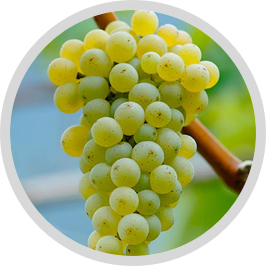
Pinot Bianco / Blanc
Italian Workhorse
Pinot Blanc may not receive the same respect given to noble varieties like Chardonnay and Riesling, or even other Alsatian whites like Pinot Gris and Gewurztraminer. But at its best, with grapes from low-yielding vines, Pinot Blanc can produce exciting values: creamy, medium bodied wines, with honey-like aromas and flavors. A relative of both Pinot Gris and Pinot Noir, Pinot Blanc is grown in a number of countries under a variety of names...
READ MORE
Similar Grapes
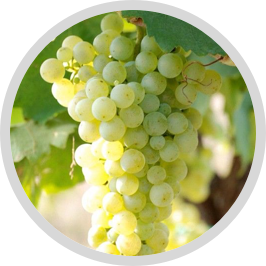
Prosecco

Riesling

Torrontes
Pinot Bianco / Blanc
Italian Workhorse
Pinot Blanc may not receive the same respect given to noble varieties like Chardonnay and Riesling, or even other Alsatian whites like Pinot Gris and Gewurztraminer. But at its best, with grapes from low-yielding vines, Pinot Blanc can produce exciting values: creamy, medium bodied wines, with honey-like aromas and flavors.
A relative of both Pinot Gris and Pinot Noir, Pinot Blanc is grown in a number of countries under a variety of names. In Germany, it is Weisseburgunder, while in Italy, it is called Pinot Bianco.
Still, the fact that we are most familiar with the grape as Pinot Blanc is a dead tip-off that the best examples of the grape come from France. In France, Pinot Blanc is most notably grown in Alsace, where it is either bottled on its own, used as a major component in the sparkling wine Cremant D'Alsace, or blended with other varieties in the region's traditional wine, Edelzwicker. We don't see much Edelzwicker, since the export market for this wine is virtually non-existent. But we're happy that we can get a decent amount of single-varietal Pinot Blanc from Alsace; the wine is made in some form by almost every Alsatian winery. These can be rich, sometimes tropical, smoky wines that are low in acidity. Look for offerings from Domaine Marcel Deiss and Domaine Schoffit.
In the U.S., some California vintners are producing Pinot Blanc with the same techniques used to make expensive Chardonnay, including new oak and malolactic fermentation. We're not convinced that this is the best way to showcase the grape, and lean more towards the wines being made in Oregon. Here, vinification techniques more closely follow the model established in Alsace, with fermentation in stainless steel or older oak leading to wines that are rich and smoky. Consider wines from Amity Vineyards and Elk Cove.
Pair Pinot Blanc with poultry, seafood, and pork.
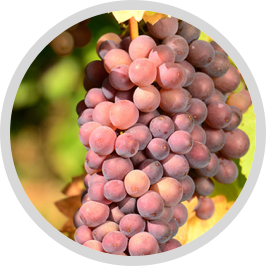
Pinot Grigio
Multiple Personalities
Pinot Gris, called Pinot Grigio in Italy, is a noble variety that, unfortunately, doesn't always produce highly refined wine. At its best, in Alsace, where it's usually called Tokay Pinot Gris, the wines are extremely rich and honeyed, in either a dry, or just off-dry style. Characteristic flavors include peach, apricots, tropical fruits, and spices. In Oregon, Pinot Gris is usually dry, with few examples seeing much in the way of oak...
READ MORE
Similar Grapes

Albarino

Chenin Blanc
Pinot Grigio
Multiple Personalities
Pinot Gris, called Pinot Grigio in Italy, is a noble variety that, unfortunately, doesn't always produce highly refined wine. At its best, in Alsace, where it's usually called Tokay Pinot Gris, the wines are extremely rich and honeyed, in either a dry, or just off-dry style. Characteristic flavors include peach, apricots, tropical fruits, and spices. In Oregon, Pinot Gris is usually dry, with few examples seeing much in the way of oak.
Alsace Pinot Gris
The third grape in Alsace's holy trinity, Pinot Gris is far more likely to produce a fat, oily, even viscous wine than a racy, high-pitched drink. Pinot Gris (also known as Pinot Grigio), is characterized by rather exotic aromas and flavors of peach and apricot, tropical fruits, orange peel, butter, nut oil, smoked meat, spices, earth, and honey. As with Geurztraminer, traditional versions of Pinot Grigio are reminiscent of ripe Chardonnay. In the hands of some producers, they are among the richest white wines of France. Pinot Gris is a versatile food wine well matches to the rich cuisine of the region -- it's frequently paired not only with pates and foie gras, rich fish prepartations and white meats, but even with red meat dishes.
Oregon Pinot Gris
Outside of the cool, hilly Alto Adige region of northeast Italy, no other region produces as many fresh, elegant examples of Pinot Gris (called Pinot Grigio in Italy) as Oregon. Unlike the weightier, spicier, and more flamboyantly ripe examples from Alsace, Oregon Pinot Gris is usually fermented to complete dryness, and few examples see much in the way of oak. Instead, the top producers make brisk, highly aromatic, light-to medium-bodied wines that emphasize clean orchard fruits such as apple, pear, and peach, often with citrus elements as well. These wines are normally best consumed within a couple years of the vintage for their fresh fruit; they are excellent choices with a range of warm-weather fare and go especially well with light, fresh seafood preparations. Pinot Gris rather than Chardonnay is the flagship white wine for many Oregon producers -- a smart move in light of the popularity of these wines.
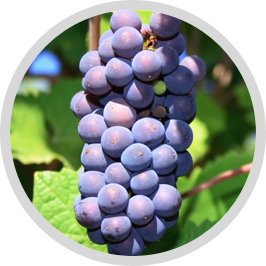
Pinot Noir
Delicately Brilliant
Adored by critics, prized by collectors, Pinot Noir is one of most tantalizing yet temperamental varietals in the world. For many wine enthusiasts, this is part of the appeal of Pinot -- it doesn't reveal its charms easily. Pinot Noir's virtue also stems from the unique characteristics of the grape. The skins are especially delicate, which accounts for the lighter color and body of the finished wine. But, despite the delicacy, the best wines have excellent...
READ MORE
Similar Grapes

Barbera

Dolcetto
Pinot Noir
Delicately Brilliant
Adored by critics, prized by collectors, Pinot Noir is one of most tantalizing yet temperamental varietals in the world. For many wine enthusiasts, this is part of the appeal of Pinot -- it doesn't reveal its charms easily.
Pinot Noir's virtue also stems from the unique characteristics of the grape. The skins are especially delicate, which accounts for the lighter color and body of the finished wine. But, despite the delicacy, the best wines have excellent backbone and length, providing aromatic intensity unlike any other grape.
As a general category, California Pinot Noir has been on fire since the movie Sideways. In fact, California's Pinot Noirs are increasingly divergent. The state offers Pinots for virtually every taste, running the style gamut from pungent, cool, minerally, and Burgundian to soft, superripe, and chocolaty-sweet. The latter style of wine, often made from grapes harvested at very high sugar levels, is popular among those who prefer extremely ripe, lush wines with strong fruit character and little apparent acidity or tannin. Many of today's new generation of wine drinkers -- especially those who did not cut their teeth on European wines -- gravitate toward this style. On the other hand, most veteran wine drinkers, especially those whose model for Pinot Noir is red Burgundy, typically find these new-style wines too roasted and high in alcohol, lacking subtlety and refinement. But today even the drinker with the most extreme Old World leanings can find California examples of Pinot Noir that will give pleasure. Never before have consumers had so many good California Pinot Noirs to choose from.
Moving north, Oregon's Pinot Noirs typically feature exuberant cherry-berry aromas and flavors; varying degrees of spicy oak; medium body; and reasonable tannin levels. Oregon Pinot Noirs generally carry moderate alcohol in the 12.5 to 14 percent range, lower than those of today's typical Pinot Noirs from California, although very warm years can bring wines with higher alcohol and more roasted flavors. Rarely austere or tough on release, the best Oregon Pinot Noirs gain complexity with three to five years of bottle aging, and top wines from the most successful vintages can improve in bottle for a decade or more. "Tender" might be an apt description of the best Oregon Pinot Noirs.
After a couple of challenging growing seasons, the 2002, 2003, and 2004 vintages brought a return to mostly favorable weather conditions. The 2002 vintage yielded many bright, harmonious Pinot Noirs from Oregon that promise to repay cellaring. Even some of Oregon's old-timers, who have bene on the scene for 30 years, consider that year to be their most successful vintage to date. Periods of extreme heat in the summer of 2003 and shortly before the harvest yielded the ripest grapes in Oregon's history. While many wines taste distinctly pruney, overripe, or roasted, the best wines from this vintage are wonderfully dense, sweet, and unusually mouth-filling, with the sheer stuffing to stand up to alcohol levels reaching as high as 15 percent. Vintage 2004 was another excellent years for the Willamette Valley, having produced fresh, tangy, classically balanced Pinot Noirs that lead with their red berry fruit and floral characteristics.
Pinot Noir has emphatically found a home in New Zealand's temperate climate, where the variety benefits tremendously from an extended growing season. The soil-inflected Pinot Noirs of Martinborough, on New Zealand's North Island, where the harvest can last well into May (the Southern Hemisphere equivalent of November), have proven their quality and ageability over the past 20 years. Much more recently, Central Otago, a spectacular inland region of lakes, alpine meadows, and steep mountains and valleys (this is where Lord of the Rings was filmed) located in the middle of the South Island, has exploded onto the world wine scene in the past decade with some stunning wines. With their rich dark fruit aromas and flavors, intriguing floral and mineral nuances, and ripe harmonious acidity -- not to mention their often considerable heft (typically 13 to 14 percent alcohol) -- these Pinot Noirs may be better suited to today's wine drinkers than the earthier Pinots of Martinborough, which, despite their often greater complexity, can come off as dry and lean in comparison. Incidentally, beginning with the 2003 vintage, most of the best Central Otago Pinot Noirs are bottled under screw cap, which further emphasizes the fresh, clean fruit of these wines.

Riesling
Fascinatingly Diverse
The Riesling grape may scare away some wine novices. In Germany, where the grape reaches its finest expression, labels hew to a rigid, abstruse set of classifications, leaving newcomers with little idea what they may be looking at. Furthermore, many wine drinkers' early experiences with sweet wines from Germany (think Blue Nun), have not been especially rewarding. We say that it's your loss if you continue to fear the tall, flute-shaped bottles. Sweet does not...
READ MORE
Similar Grapes

Pinot Bianco

Vermentino
Riesling
Fascinatingly Diverse
The Riesling grape may scare away some wine novices. In Germany, where the grape reaches its finest expression, labels hew to a rigid, abstruse set of classifications, leaving newcomers with little idea what they may be looking at. Furthermore, many wine drinkers' early experiences with sweet wines from Germany (think Blue Nun), have not been especially rewarding. We say that it's your loss if you continue to fear the tall, flute-shaped bottles. Sweet does not necessarily equal cloying, and not all Rieslings are even sweet. Push aside these negative perceptions, and discover a complex, delicate, and elegant white wine that expresses the unique characteristics of its growing region.
Riesling originated in the Rhine Valley in Germany, and it continues to flourish here as well as in the neighboring Mosel region. German producers are selective about where they plant their Riesling. It accounts for only 20% of the total plantings in the country, but has priority on steep, slate hillsides, where the soil imparts steely minerality. Here, in Europe's northernmost vineyards of any significance, microclimatic conditions are especially influential to the final product, for the Riesling grape is especially transparent to terroir. In each vineyard, the exposure to the sun, shelter from wind, proximity to water, and other factors contribute to the distinct qualities of a given wine. The timing of the harvest is just as important to the finished wine: on any given site, producers will make multiple passes to collect grapes at differing degrees of ripeness. This allows Riesling to be bottled with different levels of residual sugar: from dry, to semi-dry, to sweet. The residual sugar content also determines the suitability of these wines for cellaring, as sugar and acidity both aid in their preservation.
As a general rule, wines from the Mosel are more expensive and sought-after than wines from the Rhine. But vineyard-to-vineyard distinctions are just as important as those between the regions, and outstanding (and expensive) wines can be found in both locales. Correspondingly, specific flavors will vary from site to site, with some bottlings showcasing varied citrus fruits and others delivering notes of red fruits or apples. Reliable producers include Joh. Jos. Prüm and Reinhold Haart. In the Rhine, look for Gunderloch and Josef Leitz.
For an indication of the transparency of the Riesling grape, move to warmer-weather Alsace. Here, increased (but not overpowering) heat and a longer growing season leads to grapes with less delicacy, lower acidity, and increased fresh fruit flavors. Even still, these wines are praised more for intensity of flavor or elegance, rather than sheer power or weight. In Alsace's grand cru vineyards, sites known to have especially strong ripening conditions and soil with enhanced minerality help craft wines with greater complexity and aging potential. Bottlings bearing the names of these grand crus (e.g. Schlossberg, Sommerberg) will of course demand higher prices. Consider wines from Domaine Zind-Humbrecht, Josmeyer, and Trimbach.
While Riesling is planted sporadically in other countries, including Austria and Australia, as well as Oregon, Washington, and New York's Finger Lakes region, it rarely achieves the stylishness and grace found in Germany or Alsace. That doesn't mean that these wines should be avoided, for they can be the source of good values-- for example, wines from the Clare Valley in Australia.
Because of its combination of sweetness and acidity, Riesling is an especially versatile wine with food. It works well with fish or pork and is one of the few wines that can hold its own again spicy cuisines like Indian, Chinese, and Thai.

Sangiovese
Il Padrino
The trademark of wines from Tuscany, and especially those from the region of Chianti, was once the fiasco. This straw-colored flask may carry associations of lengthy rustic meals out on the portico of a villa in the Tuscan countryside, but this romantic reverie must be interrupted with a burst of reality-- the wine in these flasks, dominated by the Sangiovese grape, wasn't very good. This declaration isn't an indictment of Sangiovese, however....
READ MORE
Similar Grapes

Bonarda

Corvina

Merlot
Sangiovese
Il Padrino
The trademark of wines from Tuscany, and especially those from the region of Chianti, was once the fiasco. This straw-colored flask may carry associations of lengthy rustic meals out on the portico of a villa in the Tuscan countryside, but this romantic reverie must be interrupted with a burst of reality-- the wine in these flasks, dominated by the Sangiovese grape, wasn't very good.
This declaration isn't an indictment of Sangiovese, however. The blame doesn't lie on the grape, but rather on indifferent winemaking. And luckily, since the 1980s, the wine business in Tuscany has transformed, allowing growers to invest in high quality, low production clones. Now producers work hard to limit the vigor of Sangiovese vines, which, if left alone, can produce high quantities of fruit in the hot, dry conditions of Tuscany. In this wine-growing region, wine growers must be willing to reduce yields, if they wish to improve their wines. And before the marketplace changed, few producers were willing to sacrifice yields to make higher-quality wines that wouldn't necessarily be purchased.
Now, however, the reputation of the Sangiovese grape has dramatically improved. One trend remains consistent: Sangiovese is rarely bottled alone. In the past, white grapes were added to Sangiovese in Chianti blends. Now, this process has largely been dropped as part of an effort to produce bigger, more age-worthy reds, but varying percentages of many other red varieties are generally mixed in. Cabernet Sauvignon is currently the most popular blending grape, helping to craft the wines currently known as "Super Tuscans."
As Sangiovese is a fairly delicate variety in terms of the fragrances and flavors it offers, what ends up being added makes a major difference in the final profile of the wine. Climate and altitude also influence the nature of Sangiovese-based wines; wines made in hotter, drier parts of Southern Tuscany are fleshier than wines made in Chianti and other cooler, higher areas. With lesser clones and viticulture, Sangiovese tends to produce tannic wines, without great color. The best examples are highly aromatic, fragrant wines with nicely integrated tannic structure.
If you are looking for wines that are 100% Sangiovese, your best bet are the wines from Montalcino, a pretty medieval hilltop town 25 miles south of Sienna. Here, wines are made from the Brunello grape, also known as Sangiovese Grosso, an especially high quality (and large) clone of the Sangiovese grape. These full-bodied and powerful wines, labeled Brunello di Montalcino, rank with Barolo among Italy's most-ageworthy wines. Rosso di Montalcino, also grown in the same town, is also 100% Brunello, but results in a softer, fruitier wine that requires much less aging. Reliable producers for both Brunello and Rosso di Montalcino include Altesino, Caparzo, and Val di Suga.
Sangiovese based wines, including Brunello di Montalcino, are natural partners to the classic cuisine of Tuscany: bistecca florentino, pizza margherita, and veal chops, for a few examples.
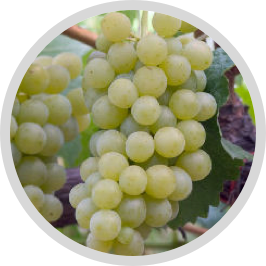
Sauvignon Blanc
French King of the Kiwis
Sauvignon Blanc is most famous as the grape responsible for Sancerre and Pouilly-Fume, two of the most popular and energizing white wines of France. In the eastern portion of the Loire Valley, Sauvignon Blanc (which is often simply referred to as Sauvignon) produces bracing, aromatically pungent wines with strong citrus and gooseberry tones along with grassy and herbal notes, which in extreme cases or underripe vintages can cross over to green...
READ MORE
Similar Grapes

Godello

Gruner Veltliner
Sauvignon Blanc
French King of the Kiwis
Sauvignon Blanc is most famous as the grape responsible for Sancerre and Pouilly-Fume, two of the most popular and energizing white wines of France. In the eastern portion of the Loire Valley, Sauvignon Blanc (which is often simply referred to as Sauvignon) produces bracing, aromatically pungent wines with strong citrus and gooseberry tones along with grassy and herbal notes, which in extreme cases or underripe vintages can cross over to green or herbaceous. A whiff of what the French call pipi de chat (cat pee) is also present in many Loire Valley Sauvignons; while this element can add a note of complexity in small doses, it can easily become overbearing. The best examples from the Loire Valley display clear mineral nuances and a distinctively dry chalkiness resulting from the limestone-domesticated soil.
Most high-quality Loire Sauvignon Blanc is fermented in temperature-controlled stainless steel tanks or in glass- or enamel-lined concrete tanks to preserve the vibrant, nervy quality of the wines. But some producers like to experiment with barrel fermentation and aging in small, sometimes new barriques -- with mixed and occasionally disastrous results. No other wine-producing region on earth can quite match the Loire Valley for the pungent citric/minerally/grassy style of Sauvignon (New Zealand comes closest), but many have mimicked the oaky style, and much of this latter type of wine seems to miss the point of the variety.
Different from Sauvignon Blanc from the Loire Valley, classic Sancerre has always been characterized by vibrancy, steeliness, minerality and pronounced Sauvignon pungency. Its fruit profile tends to the citric, evoking lemon, lime and grapefruit. In riper years, or in the hands of some modernist producers, the wines are riper and rounder, more suggestive of orchard fruits like pear, quince, and apple. Whichever style one prefers, most aficionados agree that Sancerre should always be a wine of elegance, precision, and focus rather than volume and weight.
Most of the best producers are based in the villages of Bue and Verdigny. Chavignol, the other village with exceptional vineyards and a large number of quality-minded producers, is actually an appellation unto itself, and the wines are sometimes labeled as Chavignol rather than Sancerre. Broadly speaking, the wines of Chavignol are more powerful and intense while those of Bue and to a lesser extent Verdigny are more elegant and racy, with a subtle minerality. With rare exceptions, even the best Sancerres benefit only slightly from cellaring and are best drunk within three years of the vintage.
Menetou-Salon, located just southwest of Sancerre, yields firm-edged and very dry wines from limestone-rich soil that tend to be a bit more herbaceous and more solid than Sancerre but often represent good value. (There are also red and rose wines made here from Pinot Noir, as there are in Sancerre, but little is sold into the North American market.) The somewhat warmer Quincy appellation has historically produced rounder, more alcoholic, and less assertively citric wines than Sancerre, but a new generation of growers here is working at making more vibrant, racy wines. The same can be said about Reuilly's white wines from Sauvignon Blanc; this appellation also produces rose and Pinot Noir, most of it consumed in the local market. Farther to the west, the appellation of Touraine, surrounding the city of Tours, is a growing source of competently made and inexpensive Sauvignon (as well as red wines from Gamay, Cot, and Cabernet Franc, and whites from Chenin Blanc.)
Compared to the wines of their more exalted neighbor Sancerre, Pouilly-Fume tends to be richer and a bit fuller-bodied, with greater aromatic pungency. The vineyards here feature more flint in the soil, producing wines that are typically broad, meaty, and less delicate than Sancerre. The most prized vineyards are especially rich in flint, or silex, which the locals claim is responsible for the smoky gunflint aroma that marks classic examples of Pouilly-Fume. As with Sancerre, Pouilly-Fume is usually best consumed during the two or three years following the vintage, before the vibrant fruit begins to fade. Broadly speaking and with the prominent exception of the wines from cult producer Didier Dagueneau, Pouilly-Fume tends to be priced in the North American market at about 20 percent less than most Sancerre, as it does not enjoy quite the same popularity.
Sauvignon Blanc from California ranges in style from minerally, grassy, and citric wines (more akin to examples made in the Loire Valley or New Zealand) to opulent, tropical-fruity wines fermented and aged in barrels and often including a percentage of Semillon a la white Graves. Some of these latter Chardonnay wannabees seem to miss the point of Sauvignon, which is to be refreshing rather than overbearing. In recent years the brisk, citrusy style of Sauvignon has enjoyed steadily growing popularity on restaurant lists, and today there are many new plantings of Sauvignon Blanc in cooler regions -- as opposed to the valley floor of Napa Valley, where Cabernet grapes fetch a higher price anyway. Prices for Sauvignon Blanc have escalated as demand for these wines has grown. (Incidentally, Fume Blanc is used on the label by a number of producers, usually to signify a wine made in a richer barrel-fermented, oak-aged style.)
Although some examples have proven that they can last in a bottle, there's little if anything to be gained by cellaring these wines, and the overwhelming majority of California's Sauvignon Blancs are best consumed in the two or three years following the harvest.

Semillon
Sauvignon Blanc's Bosom Buddy
Semillon is a paradoxical grape, as much of its appeal stems from its susceptibility to rot. Sure, the idea of rot may conjure up nasty images, but in winemaking, rot isn't necessarily a negative. Grapes can be affected by two types of rot: grey rot and noble rot, also known as Botrytis. While the former is a destructive force, diminishing yields and making wines taste moldy, noble rot causes grapes to shed water while still on the vine, thereby...
READ MORE
Similar Grapes

Chenin Blanc

Grenache Blanc

Vermentino
Semillon
Sauvignon Blanc's Bosom Buddy
Semillon is a paradoxical grape, as much of its appeal stems from its susceptibility to rot. Sure, the idea of rot may conjure up nasty images, but in winemaking, rot isn't necessarily a negative. Grapes can be affected by two types of rot: grey rot and noble rot, also known as Botrytis. While the former is a destructive force, diminishing yields and making wines taste moldy, noble rot causes grapes to shed water while still on the vine, thereby concentrating sugars and acids. The thick skins of the Semillon make the grape prone to noble rot, but certain vintages, where improper climatic conditions occur, can be affected by the latter.
Concentration of sugars and flavors are critical because Semillon is the key component of one of the world's famous sweet wines, Sauternes. Some Sauvignon Blanc is usually blended in to provide a little acidity and freshness. Made in the Sauternes region of Bordeaux, producers rely on Botrytis in the Semillon to deliver the characteristic honeyed nectars of the wine. In years when neither type of rot develops, producers are stuck with a sweet wine lacking real complexity and texture. Even worse are the years when grey rot strikes. Furthermore, harvest of the grape requires great care, with multiple passes through the vineyards necessary to pick Botrytis-affected clusters and even individual berries. Consequently, Sauternes is not an inexpensive wine, but we're convinced that with foie gras, there's nothing better. Here, the acidity and sweetness of the wine provide the perfect counterpoint to the rich density of foie gras. We like the producers Chateau d'Yquem and Climens.
Semillon is also also used to make dry wines in Bordeaux, again blended with Sauvignon Blanc. Here, the Sauvignon is usually the dominant partner, with Semillon used to add softness and richness to counter the brisk characteristics of Sauvignon. Introduction of Semillon generally makes these wines more age-worthy. For top examples of Bordeaux blends featuring Semillon prominently, look to the legendary Chateaus Haut-Brion and Laville Haut-Brion.
Outside of France, Semillon has a long history in Australia. Hunter Valley, Australia's oldest wine region, is home to a number of producers making single-varietal Semillon. Here, Semillon is usually unoaked, and wines have orchard fruit characteristics. Try wines from Brokenwood and Margan. These dry Semillons will be reliable partners for seafood and white meats.

Syrah / Shiraz
Big Beauties
While the grape is currently grown throughout the world, the most elegant Syrahs still come from the Northern Rhone valley, particularly the appellations of Côte Rôtie, Cornas, and Hermitage. Here, steep, terraced vineyards help produce full-bodied, intense, tannic wines loaded with white pepper and red fruit. In the vineyard, Syrah is largely cooperative- vines are productive, but not overly vigorous. Skins are thick, helping the grape withstand...
READ MORE
Similar Grapes

Cabernet Sauvignon

Malbec
Syrah / Shiraz
Big Beauties
While the grape is currently grown throughout the world, the most elegant Syrahs still come from the Northern Rhone valley, particularly the appellations of Côte Rôtie, Cornas, and Hermitage. Here, steep, terraced vineyards help produce full-bodied, intense, tannic wines loaded with white pepper and red fruit.
In the vineyard, Syrah is largely cooperative- vines are productive, but not overly vigorous. Skins are thick, helping the grape withstand more extreme climatic conditions. The climatic conditions in the Northern Rhone are especially conducive to the growth of the grapes, for they require heat to attain full ripeness. Still, even slight overripeness can cause the grape to lose its varietal character.
In the Northern Rhone, Syrahs are all oak aged for some period of time. While historically, this aging has occurred in large, old oak casks, small oak barrels like those used in Bordeaux and Burgundy are currently gaining in popularity. Wines from the top appellations, Hermitage and Côte Rôtie, will have the most pronounced oak character. But these wines can be shockingly expensive; collectors know that they have the alcohol, tannin and concentration to age for years, and the price reflects this awareness. The most famous producers in Hermitage are Chapoutier and Chave. In Côte Rôtie (where many of the wines are actually co-fermented with a small amount of the white grape Viognier), look for Guigal and Jasmin.
Retreating a little bit on the price spectrum, the appellations of Cornas, St. Joseph and Crozes-Hermitage produce high-quality wines, albeit with less body, tannin, and intensity from the top appellations. In Cornas, look to Auguste Clape. For St. Joseph, Chapoutier and Jaboulet are especially reliable. The top producers from Hermitage also have a presence in Crozes-Hermitage, but also look for wines from Alain Graillot.
Syrah retains a presence farther down the Rhone Valley, but in the southern Rhone, the Syrah tends to be more opulent, and less structured. Here it does not stand on its own and is frequently blended with other Rhone varieties like Grenache and Mourvedre, most notably in the appellation of Chateauneuf-du-Pape. Similarly, it retains a key place as a key blending grape in wines from Coteaux de Languedoc.
In California vineyards, as part of the general rise in plantings of Rhone varietals, the presence of Syrah has dramatically increased in the last fifteen years. The problem is that these wines are often made with less finesse in California than in France. In too many cases, we find wines that are just too much-- too much sugar, too much alcohol, too much extraction. But looking carefully for more restrained examples can yield great dividends. The Central Coast has a number of winemakers that show discipline and keep the intensity of their wines in check; consider Jaffurs Wine Cellars, Beckmen Vineyards, and Qupe.
In Australia, where the variety is known as Shiraz, the greatest examples come from the Barossa Valley. Here, the vines were first planted in the mid-1800s, and some old vines continue to produce fruit for terrifically concentrated wines. As a general trend, Barossa Shiraz will be richer, and show more stewed-fruit flavors than Syrah from the Rhone. Similarly powerful Shiraz also comes from McLaren Vale. Two Hands makes terrifically concentrated bottlings from both regions, and Penfolds is another reliable producer of burly Shiraz. While Australia's reputation rests on intense, concentrated Shiraz, more understated examples come from Hunter Valley and the Heathcote region, including wines from the producer Heathcote II.
Syrah pairs well with red meats, spicy pizzas, and and other savory meat dishes. These dishes provide an excellent complement to the peppery flavors and heft of the wine.

Torrontes
Packs Peronality
Torrontes is a name rapidly becoming synonymous with the white wines of Argentina. It doesn't represent just a single grape variety, however – several varieties bear the name Torrontes. The most significant of these are Torrontes Sanjuanino, Torrontes Mendocino and Torrontes Riojano. The latter of the three is the most widely planted, and typically produces the better-quality wines. Torrontes wines range in style from light and fresh to heady and intensely perfumed...
READ MORE
Similar Grapes

Pinot Bianco

Riesling
Torrontes
Packs Peronality
Torrontes is a name rapidly becoming synonymous with the white wines of Argentina. It doesn't represent just a single grape variety, however – several varieties bear the name Torrontes. The most significant of these are Torrontes Sanjuanino, Torrontes Mendocino and Torrontes Riojano. The latter of the three is the most widely planted, and typically produces the better-quality wines. Torrontes wines range in style from light and fresh to heady and intensely perfumed, often expressing spicy, soapy characters and aromas of white flowers.
There is some uncertainty surrounding Torrontes' origins – which is hardly surprising, given the fact that the name is used by several entirely distinct varieties. Some suggest the Riojano strain was introduced from Spain (although it takes its name from the Argentinian region of La Rioja where it was once widely planted). The Mendocino and Sanjuanino strains (from Mendoza and San Juan, respectively) are thought to be indigenous, and both offspring of the Muscat of Alexandria grape variety.
Torrontes thrives in Argentina's famously high-altitude vineyards, and particularly in the Cafayate region of Salta. This region, on the edge of the Andes, boasts some of the highest vineyards in the world, reaching up to around 10,000ft (3000m) above sea level. Here, dry, desert-like conditions and a significant diurnal temperature shift help bring out the best in Torrontes.
The variety has large berries with thick skins, and ripens early. Its susceptibility to mildew makes it a good choice in the dry, continental climate of the Andes, where there is little pressure from this kind of disease. The cooler climate here helps with the retention of acidity but, where this is less pronounced, Torrontes-based wines can tend toward high alcohol. The three strains of Torrontes have slightly different characteristics: Riojano is the most expressive, while Sanjuanino is less focused and Mendocino less aromatic. All of these are usually produced in a fresh, crisp style without oak maturation and are best consumed within one or two years of release.
Torrontes has quickly risen to become Argentina's signature white-wine grape, and one of the most widely grown. As of 2012 is the country's second most widely planted light-skinned variety (behind the local Pedro Gimenez grape, which is used to make simple table wines for local consumption).

Vermentino
Ode to the Ocean
Vermentino is a white-wine grape grown in various locations around the western Mediterranean: northwestern Italy, southern France and the neighboring islands of Corsica and Sardinia. It goes by various names, among them Pigato in Liguria, Favorita in Piedmont and Rolle in Provence, although there is long-standing disagreement over which of these are synonyms of Vermentino and which are distinct varieties in their own right. Whatever the truth, Vermentino wines...
READ MORE
Similar Grapes

Chardonnay

Semillon
Vermentino
Ode to the Ocean
Vermentino is a white-wine grape grown in various locations around the western Mediterranean: northwestern Italy, southern France and the neighboring islands of Corsica and Sardinia. It goes by various names, among them Pigato in Liguria, Favorita in Piedmont and Rolle in Provence, although there is long-standing disagreement over which of these are synonyms of Vermentino and which are distinct varieties in their own right. Whatever the truth, Vermentino wines, Pigato wines, Favorita wines and Rolle wines have a lot in common, most obviously their refreshing acidity and attractive aromas of peach, lemon peel, dried herbs and a whiff of saline minerality.
The taxonomic confusion mentioned above is caused by uncertainty over Vermentino's genetic and geographical origins. While some authorities suggest that it came to Italy from Spain, others say precisely the opposite. A third theory even depicts the variety arriving in the Mediterranean from the Middle East, via Greece. Happily, such discussions and disagreements are entirely academic – in every sense of the word. What really matters is where the grapes are grown today, and what the wines are like.
In Liguria, Vermentino (Pigato) is the principal variety in white wines from the Colli di Luni. Here, the wines' crisp freshness and minerality echo the cool, bright landscape of the Carrara marble quarries. Just to the west, Vermentino vines are found alongside Bosco and Albarola in the dramatic cliffside vineyards of the Cinque Terre. In this visually stunning location, the variety is used to make more than just dry wines; air-dried (passito) Vermentino grapes are a key component in the sweet, nectar-like Cinque Terre Sciacchetra.
Just down the coast in Tuscany, the vineyards of Bolgheri produce some of Italy's very richest Vermentino. The Tuscan climate – warmer and sunnier than that of Liguria – combines with winemaking techniques such as skin contact, lees contact and barrel aging to create Vermentino whose weight and aromatic complexity might be compared to that of Viognier.
Across the Tyrrhenian Sea in Sardinia, Vermentino has risen to become the island's key white-wine grape. Here, the variety has its very own regional appellation, Vermentino di Sardegna, and is used to make one of the island's most highly regarded wines, Vermentino di Gallura.
Within swimming distance of Gallura are the southernmost vineyards on the French island of Corsica. Vermentino is the number one white-wine grape here too, as the key ingredient in white wines from all over the island. As either Vermentino or Rolle, it is successfully grown in the vineyards of Patrimonio, Ajaccio, Figari, Calvi, Sartene, Porto-Vecchio and on the "Cap Corse" peninsula.
100 miles (160km) across the sea from the Cap Corse, lies the Provençal coast of southern France. Here, the variety is traditionally known as Rolle, but is increasingly labeled with its more-fashionable Italian name Vermentino. Whichever name it goes by, the variety has been sanctioned for use in AOC wines only in the past 20 years or so. Previously it was restricted to Vin de Pays/ IGP wines (see French Wine Labels). Of particular note are the white wines of Bellet, which are made from at least 60 percent Vermentino.
In the United States, a few small-scale producers have begun to make Vermentino wines (mostly in California), but the variety has not yet shown signs of achieving the kind of popularity enjoyed by Chardonnay, Pinot Grigio or Sauvignon Blanc. The global, ubiquitous popularity of these three varieties has played a significant part in Vermentino's growing popularity in Australia, where several wineries have offered the variety as a refreshing alternatives to the everyday and obvious.

Viognier
A Golden Grape
Emerging from the tiny appellation of Condrieu in the northern Rhone, Viognier has become a rising star in California vineyards, as our American palates have evolved to appreciate more aromatic white wines. Still, the most desired bottlings of Viognier continue to come from Condrieu, a region just south of the city of Lyon.
Centuries of cultivation here have taught producers how to deal with some of the temperamental characteristics of the grape...
READ MORE
Similar Grapes

Chardonnay

Chenin Blanc
Viognier
A Golden Grape
Emerging from the tiny appellation of Condrieu in the northern Rhone, Viognier has become a rising star in California vineyards, as our American palates have evolved to appreciate more aromatic white wines. Still, the most desired bottlings of Viognier continue to come from Condrieu, a region just south of the city of Lyon.
Centuries of cultivation here have taught producers how to deal with some of the temperamental characteristics of the grape. Viognier is highly sensitive to mildew and generates low and unpredictable yields. Proper harvesting is also a challenge: if picked too early, the grape fails to display its full profile of flavors and aromas; picked too late, the grape makes wines that are oily and lacking perfume.
In Condrieu, local conditions are also unique: the Mistral winds off the Mediterranean play a moderating role in viticulture, cooling the wines after the heat of the summer. Vines grow on steep, granite-rich slopes, allowing grapes to reach great concentration. The age of the vines also makes a difference, for Viognier vines don't hit their peak until at least 15-20 years of age-- some of Condrieu's vines are at least 70 years of age. The result is a delicate white with the aroma of a powerful sweet wine.
Viognier from Condrieu is also an exception to the rule under which expensive wines are also age-worthy wines. Condrieu is generally best in its first year or two after release, because its distinctive aroma often mellow after this period. Yet this wine is not cheap; the small size of the appellation limits the amount of wine produced. Look for wines from E. Guigal and Yves Cuilleron.
The improving quality of California Viognier has provided an lower-priced alternative to the wines of Condrieu. Viognier is a bit of trail-blazer-- its success in California helped pave the way for other Rhone varietals, like Roussane and Marsanne. Here, Viognier has recovered from an early impulse among producers to apply vinification techniques better suited to Chardonnay. Now, the best examples retain the aromatic complexity of the grape-- ill-fated experiments using lots of oak barrels are largely resigned to the past. Look for wines from Cold Heaven and Alban Vineyards.
Thanks to its aromatic intensity, Viognier can stand up to spicy foods like Thai or Indian cuisine better than most wines. Another reliable bet is chilled seafood, especially shellfish.
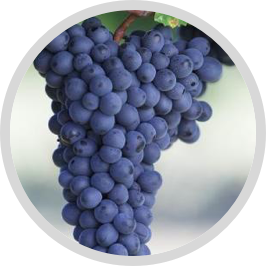
Zinfandel / Primitivo
A Great American Mystery
Zinfandel is not the rage it was in the 1980s and early 1990s, as there are now too many wines made from overripe fruit or from young vines, or overwhelmed by excessive use of new barrels. Today's Zinfandel styles range from elegant, taut, and claret-like midweights to superripe and potty behemoths, with off-the-charts alcohol levels, distinctly exotic character, and, frequently, noticeable residual sugar. Classic Zinfandels are normally medium to full in body...
READ MORE
Similar Grapes

Nebbiolo

Nero D'Avola
Zinfandel / Primitivo
A Great American Mystery
Zinfandel is not the rage it was in the 1980s and early 1990s, as there are now too many wines made from overripe fruit or from young vines, or overwhelmed by excessive use of new barrels. Today's Zinfandel styles range from elegant, taut, and claret-like midweights to superripe and potty behemoths, with off-the-charts alcohol levels, distinctly exotic character, and, frequently, noticeable residual sugar. Classic Zinfandels are normally medium to full in body, with fruit-driven aromas and flavors of fresh berries, black pepper, and spices, sometimes with notes of citrus zest, chocolate, and briary underbrush; they are rarely overwhelmed by oak notes. Many of the best producers continue to work largely with very old vines (some-times with "field blends" that include other grapes such as Petite Sirah and Carignan), which give consistently low crop levels and make wines with atypical creaminess of texture, aromatic complexity, and aging potential.